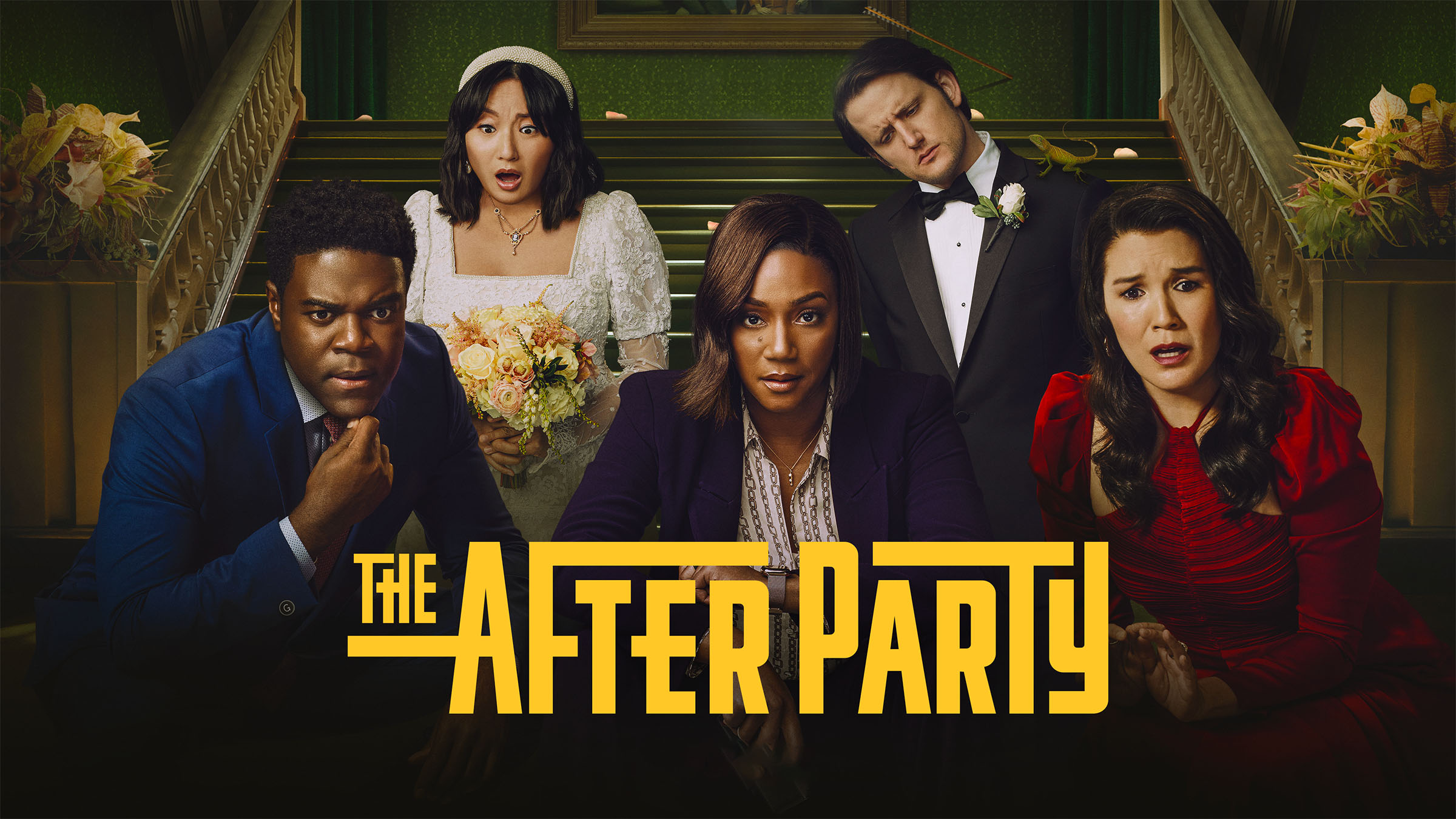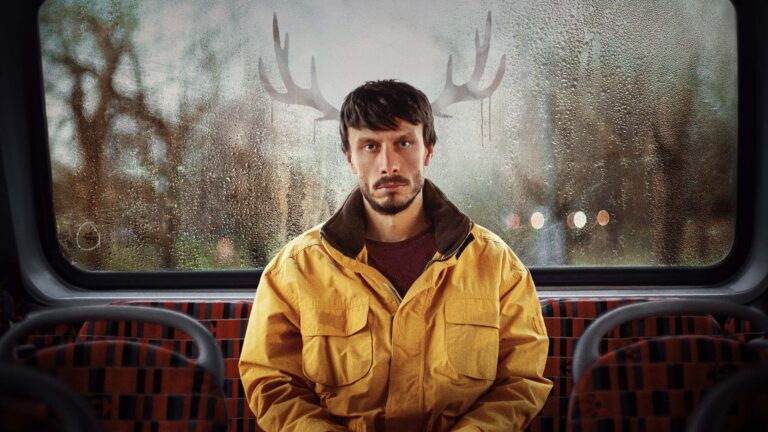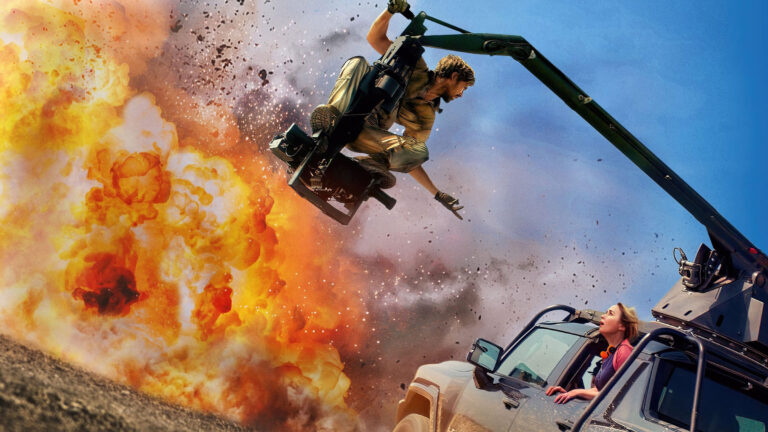The Afterparty editors, Nick Olah, Marissa Mueller, and Ivan Victor ACE, not only got to have fun with the classic “Rashomon” style of storytelling for the Apple TV+ original series, but they also got to do it by paying homage to their favorite film genres and filmmakers. From erotic thrillers to film noir, from Hitchcock to Wes Anderson, no style and no “body” was spared in their comedy whodunnit.
In Season Two of The Afterparty, Aniq (Sam Richardson) and Zoë (Zoë Chau) are celebrating one year together following last season’s events. They attend the wedding of Zoë’s sister, Grace (Poppy Liu), to an eccentric Silicon Valley businessman named Edgar (Zach Woods). When Edgar and his pet lizard Roxana are found dead the following morning, Aniq calls Detective Danner (Tiffany Haddish) for help. Danner, who has left the LAPD to write a book about the murder she solved in Season One, agrees to take the case before the local police get involved. Once the interrogations begin, it’s clear that everyone had a motive to send the groom to his grave.
In our discussion with the editors of The Afterparty, we talk about:
- Keeping the sleuthing in sync
- Watching out for leaping lizards
- Making the most out of Africa
- How editors organize their refrigerators
- Going “IG Official” for laughs
Listen while you read…
Editing The Afterparty
Matt Feury: Nick, you go back the longest on the show. I think you cut the pilot in season one. You did eight episodes of season one and then four of season two. How did you get on the show?
Nick Olah: Back in 2020 and super COVID time, there was not much work going on. I was available. My old post producer, Annie Court, called me up and said she was doing something with Phil Lord and Chris Miller. She asked if I’d be interested.
They had an editor already, Joel Negron, who is a big feature film guy. He cut 21 Jump Street. Chris brought him on right away. There was just such an insane amount of footage that they said, “I think we’re going to need someone else too.”
Annie called and asked if I was interested. I said, “Sure, I’m available,” and they sent me the scripts. Normally, when you go into an interview, you get the pilot script to read. They sent me all eight episodes the day before this interview with Chris.
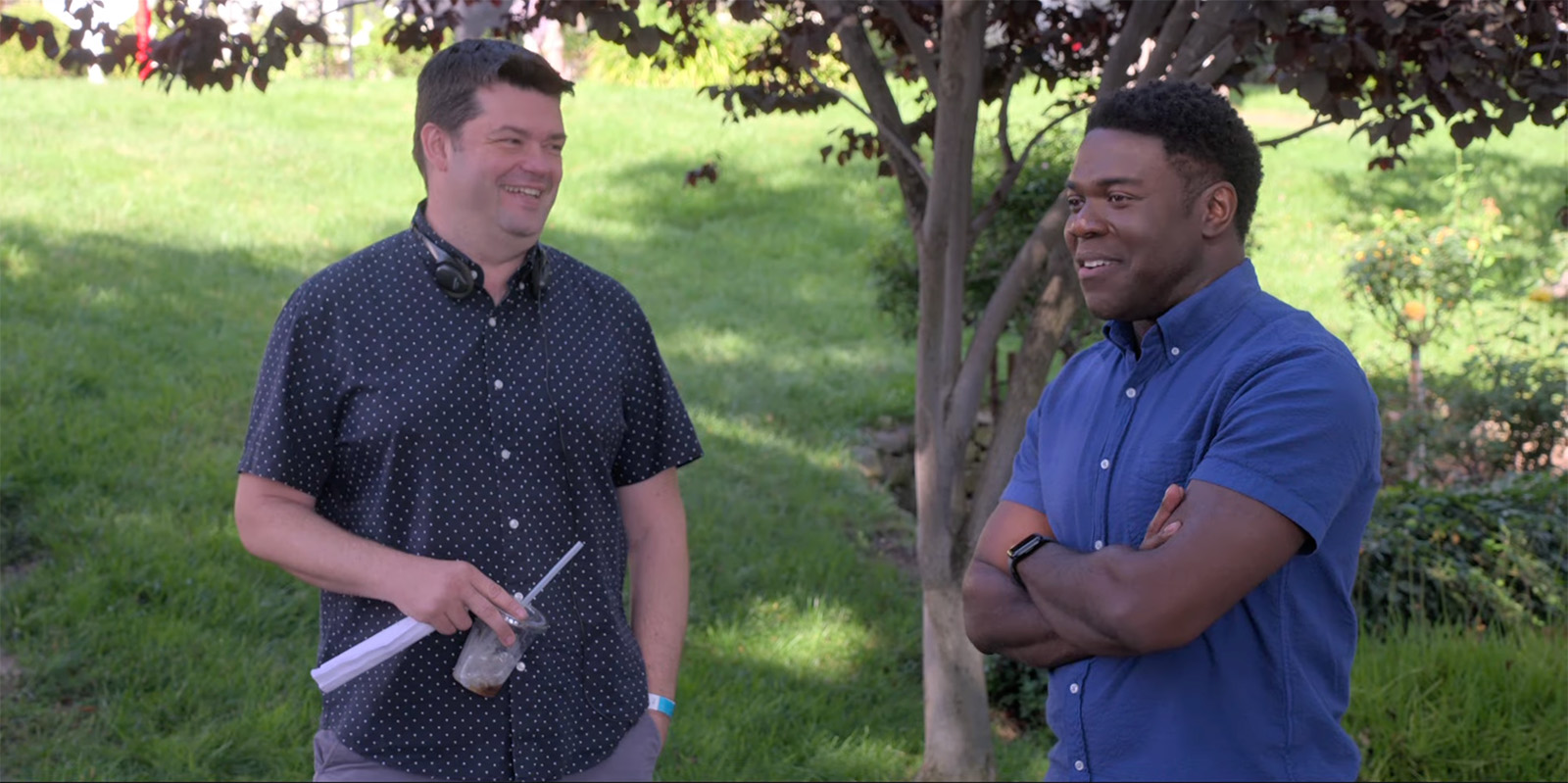
I thought, “Okay, this is different.” So I read through them all, and I loved it. The next day, I chatted with Chris for, I don’t know, five or ten minutes. He said, “All right, cool. You want to do it.”
Since Joel came from a feature background, it was treated like a feature, which makes sense because all the episodes are “mind movies.” So we split everything up every day, dailies came in, and each of us cut whatever was coming in. Then we just went rolling into season two.
MF: So when you did the first episode, it wasn’t like doing a pilot? It wasn’t to sell the show?
Nick Olah: We were already locked in. It had already been picked up for eight episodes. Everything was written beforehand. It had to be because it’s such a unique show. Everything is so tied together, every single episode. The first season was completely block shot.
Everything was written beforehand. It had to be because it’s such a unique show. Everything is so tied together, every single episode.
Season two was different. It was blocks of two or three episodes at a time. Chris directed every single episode that first season as well, so it was really just a long series of dailies rolling in.
MF: Marissa, season two was your first season, but I believe you and Nick worked together on a show called Young Rock. Was that connection with Nick how you came to join season two, or is it just a crazy coincidence?
Marissa Mueller: It certainly helped, I’m sure. We were finishing on Young Rock and I learned separately from Nick that The Afterparty season two was looking for editors. Since I knew he had worked on season one and I was a big fan, I mentioned, “Hey, I heard they’re looking.” He said, “Yeah, I’m going back” and I said, “Would you mind if I submitted for one of the other spots?” He agreed, saying, “Sure, I’ll put your resume in for you.”
I’m sure that helped get me in front of them. They already loved Nick. I got an email from Annie, the post producer, and I interviewed. They sent me the “Aniq” and “Yasper” episodes of season one, and then the “Aniq 2: The Sequel” script.
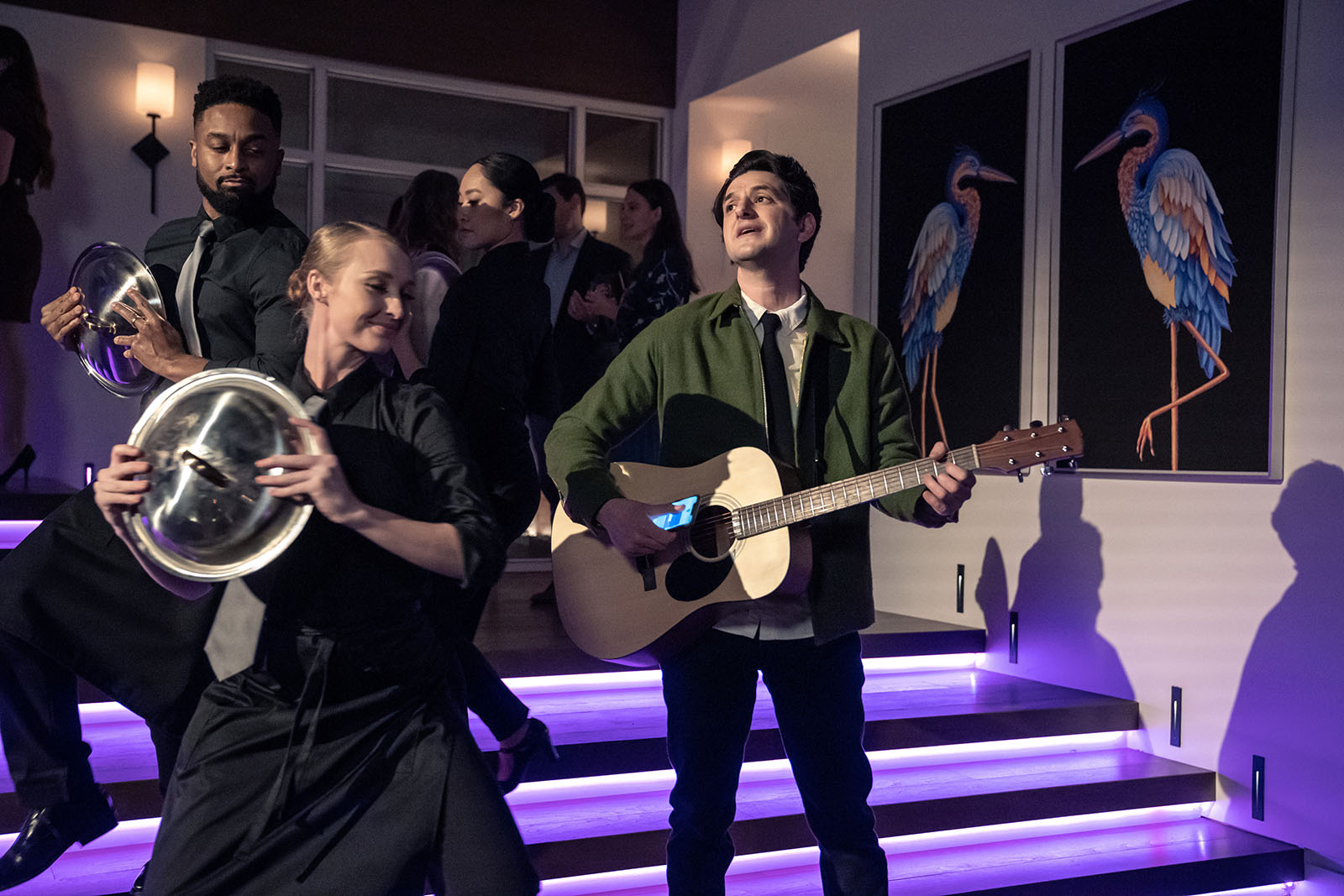
It was a really fun interview. Everyone was really excited. You could tell what they were going to do in the new season. I loved the genres and talking about what work I had done that correlated to some of the genres from season one.
A couple of days later, they said, “They loved you! We want to hire you.” I was very excited.
MF: Nice. Who doesn’t love Nick? I mean, come on. Ivan, the last time we spoke, I believe it was for the Amazon Prime series Paper Girls. I can’t recall if you brought up The Afterparty at that time. Regardless, let’s hear your story about joining The Afterparty.
Ivan Victor, ACE: That came about through my agent at the time and I was, like a lot of people, available.
It was one of the opportunities that was presented to me and it was my favorite. I didn’t meet with Chris Miller. I met with Anthony King and Aubrey Davis Lee. Anthony King is the showrunner and he works very closely with Chris.
I was all in from having watched season one as well. The opportunity to work with that team, on a show with that many different genres, is an editor’s dream.
MF: The series is done in a sort of Rashomon style where each of the characters have their own episode. Those episodes detail their POV or, “mind movies” as Detective Danner (played by Tiffany Haddish) calls them, for the events around the murder.
Each episode is shot in a different style. There’s a Wes Anderson episode, a Hitchcock episode, a film noir, an erotic thriller, among others. Did you have any say in which episode you did? I can imagine each of you having an affinity for certain styles of filmmaking.
Nick Olah: No, we had no say at all. It was completely random. Marissa and I were the first two on. The first two episodes they shot were episodes three and nine, the film noir and the Hitchcock.
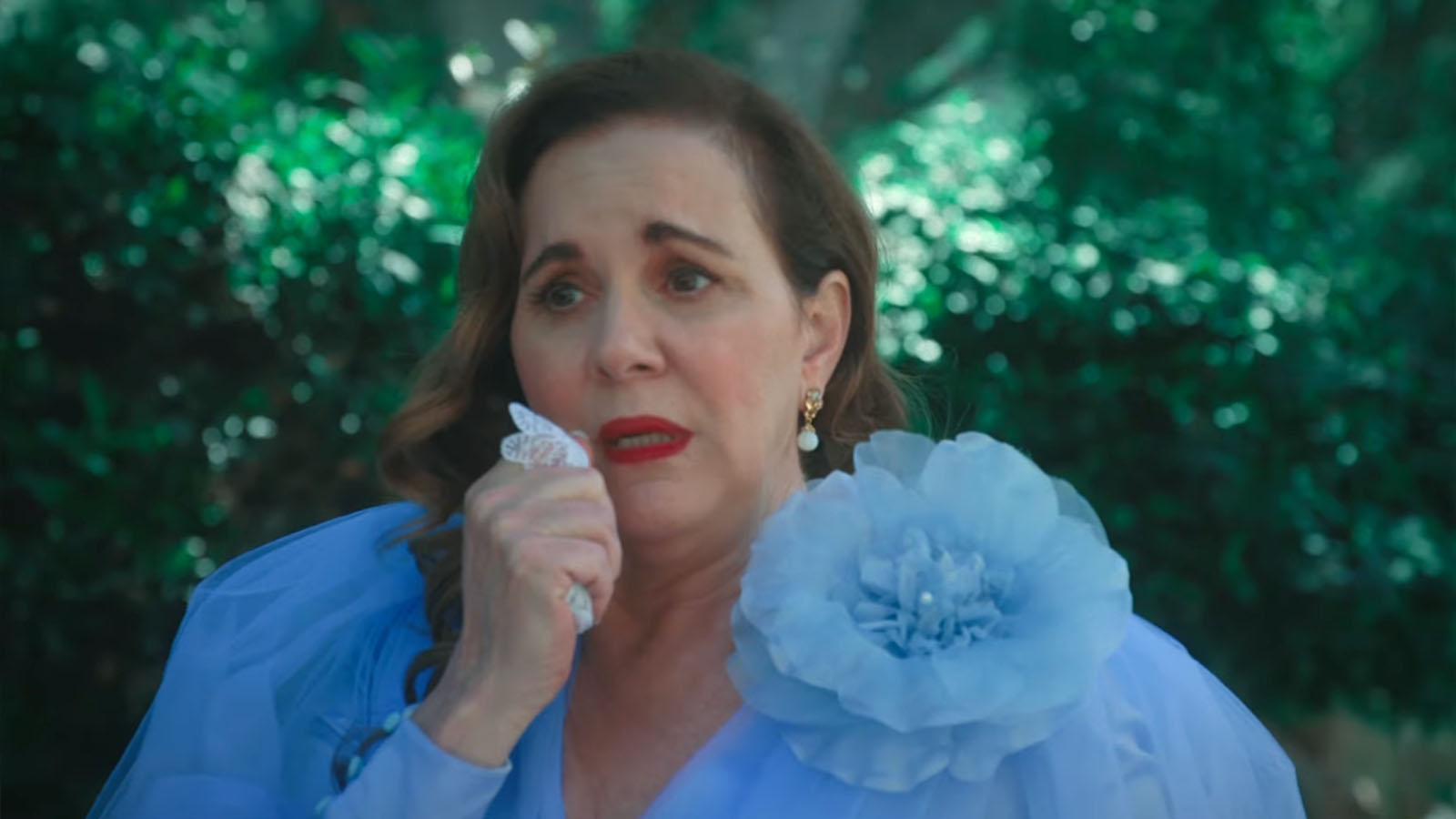
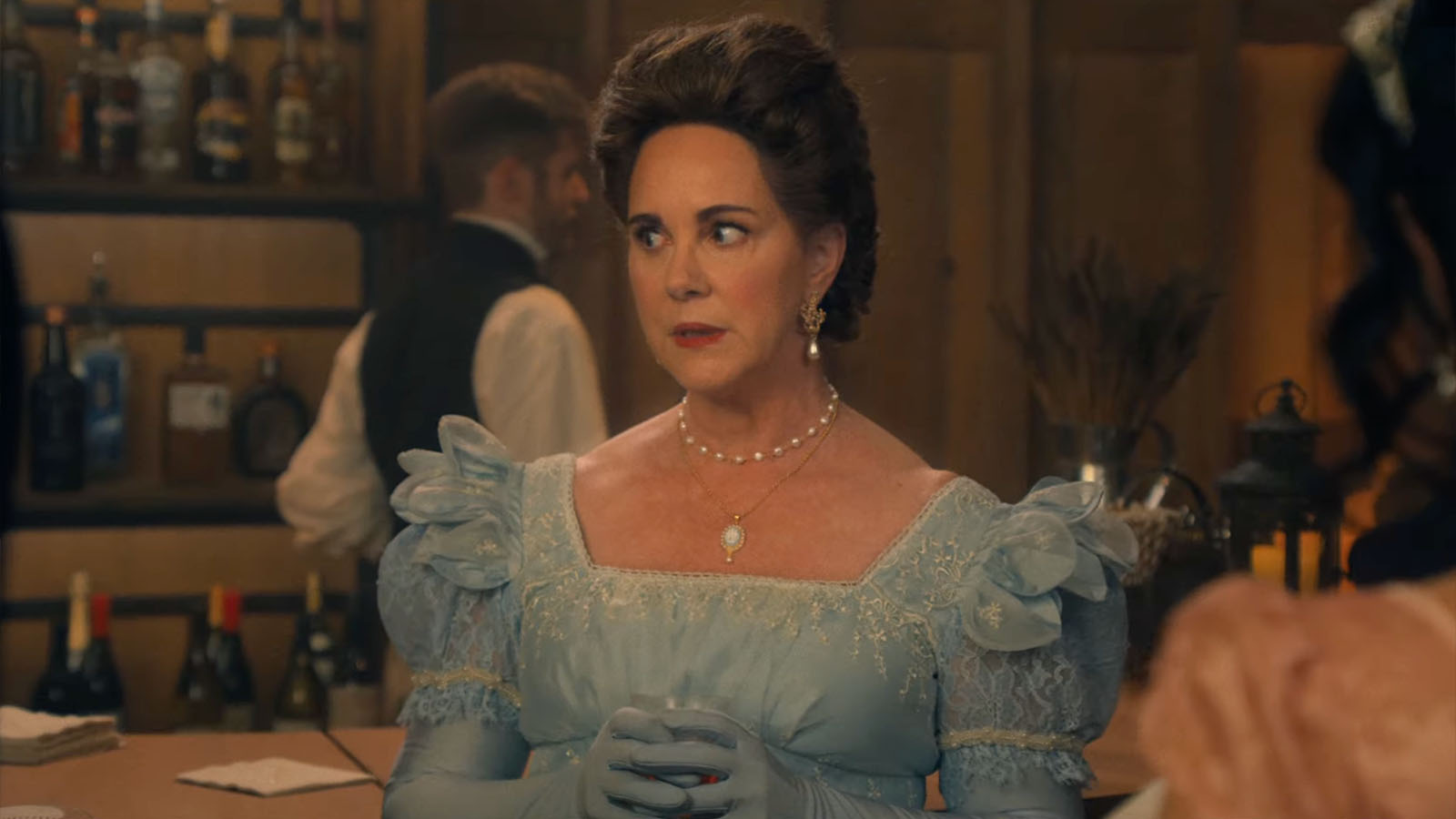
The entire season was shot completely out of order. Really, it was just the three of us getting assigned episodes according to when they were shot. One, two, three, one, two, three. We really didn’t have any say, which was kind of fun. It’s exciting not knowing what genre you’re gonna get.
It’s exciting not knowing what genre you’re gonna get.
MF: Were you jealous of each other? Did any of you say, “I wish I got the Wes Anderson one!”
Nick Olah: Oh yeah, of course! I think we all were, right?
Marissa Mueller: A little bit for sure. In my interview, they didn’t tell me all of the season two genres, but they mentioned the 90s erotic thriller. I thought, “Oh wow, that sounds like a blast.” When I got it, I was very excited. I thought, “I’ve wanted this since the interview!”
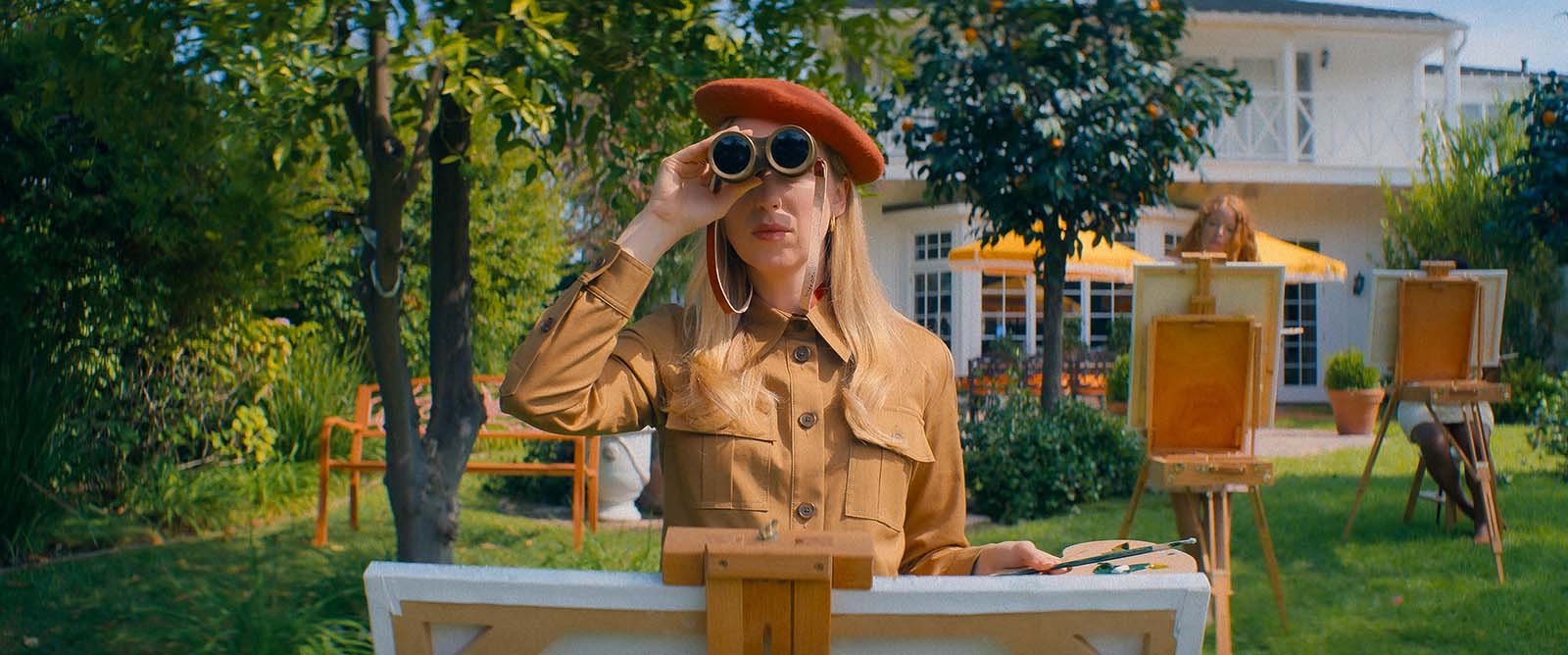
Nick Olah: I’m a huge hard-boiled detective novel fan. My favorite authors are Raymond Chandler and Dashiell Hammett. I just love everything about it, so I was thrilled to get the hardboiled detective film noir episode.
Ivan Victor: That was one that I wanted just because I love that genre. Billy Wilder as well, the whole Double Indemnity style. I was a little jealous, in a good way. I was happy you had it.
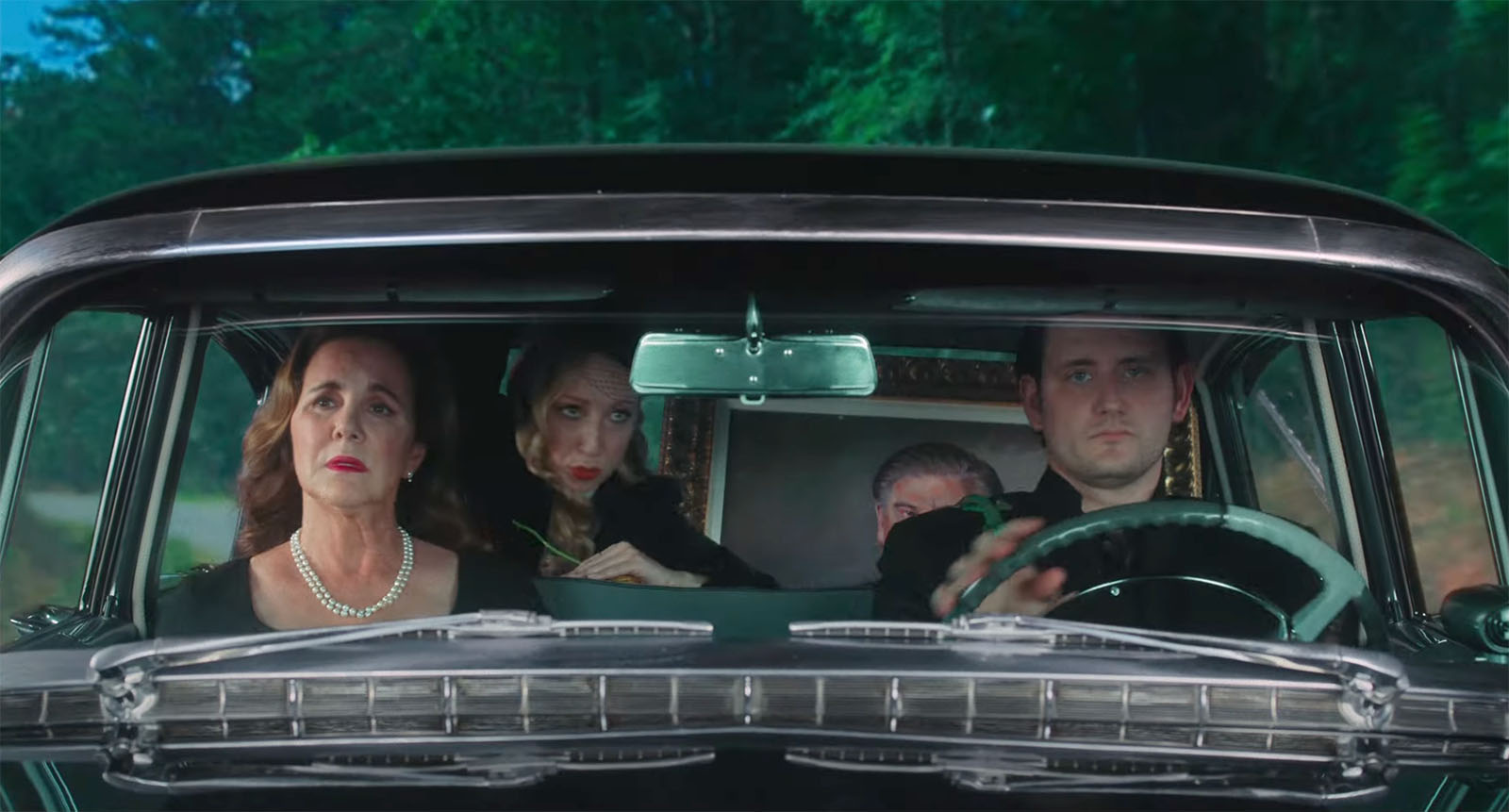
MF: They’re all good. Whichever episode you got, you made them work. Doing these different styles, there will be costumes, cinematography, score, production design, and the titling. There are elements within the scene that really speak to what those genres are.
But can editing be done in a certain style? Or is a cut just a cut?
Marissa Mueller: I think it definitely can be done in a style. I certainly did a lot of research for both the Hitchcock episode and the 90s erotic thriller. Dissolves may be used a lot more than they are used in editing nowadays. I did a lot of research on how Wes Anderson movies are put together. Each genre definitely has its own editing style. It lends a hand in helping tell the story, for sure.
Each genre definitely has its own editing style.
Nick Olah: A lot of it comes down to different pacing. Like Marissa said, there are different elements used within each genre. We had a scene in Travis’s (played by Paul Walter Hauser) film noir episode where we were running long. We had to cut out a huge chunk of a scene. Within this scene, we’re trying to create a transition and we realized, “Oh, in this genre they would just do a long cross-dissolve. That makes life kind of easy now.”
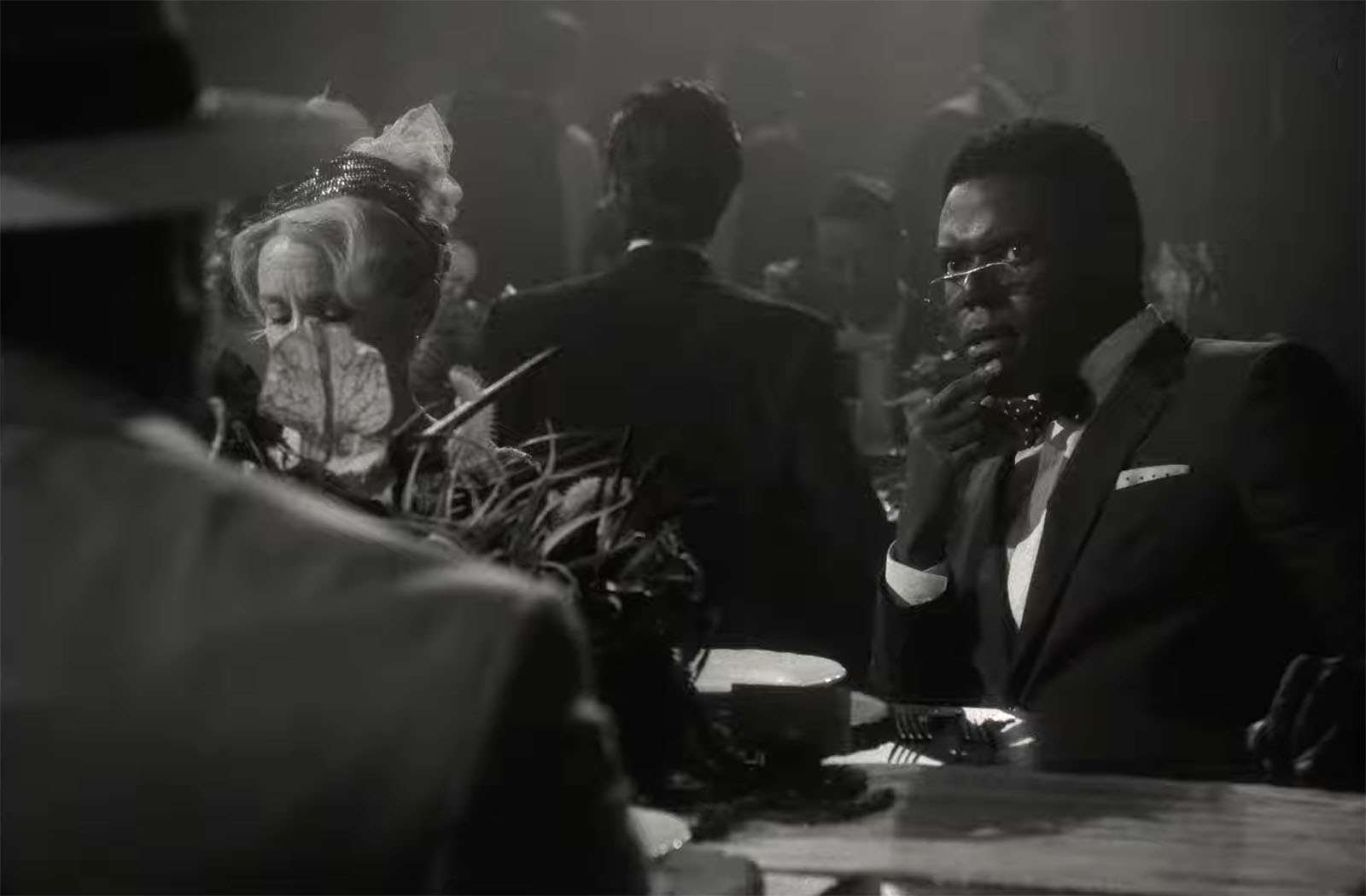
MF: That’s probably why they did it.
Nick Olah: Yeah, exactly.
MF: I generally ask editors if they get reference points from the director or showrunners. Knowing you had these different genres, did you immerse yourselves in certain films?
Marissa Mueller: I watched all of those films. I started with episode nine, like Nick said, so I knew what was coming. Before we started getting dailies, I would just watch films. I watched a lot of Hitchcock. Rear Window, Vertigo was a big one, Marnie, North by Northwest. I watched the color ones because I knew it would be shot more in that vein. I watched a lot of erotic thrillers too. That was a lot, but they were helpful.
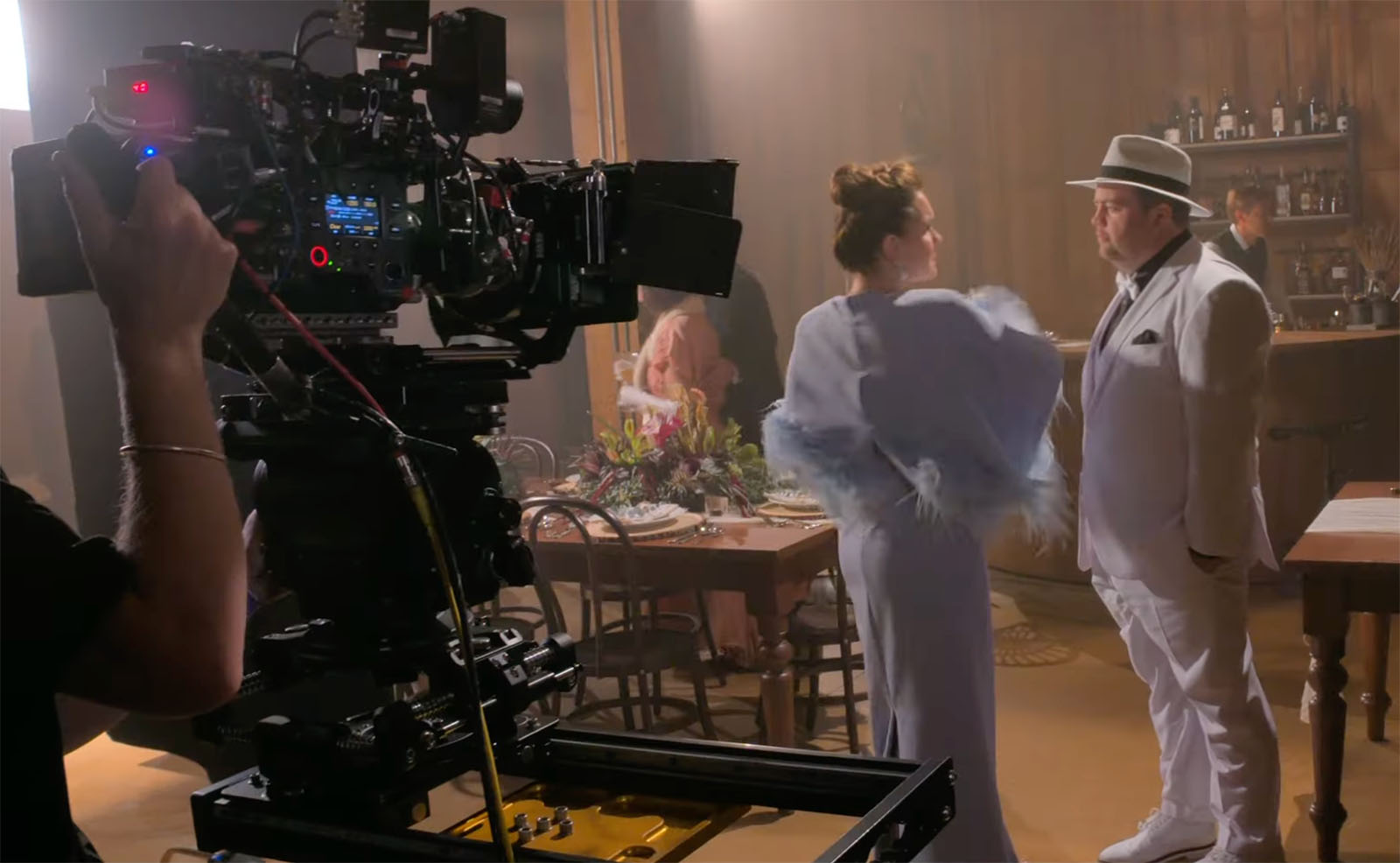
Ivan Victor: I watched a lot of General Hospital.
Marissa Mueller: But from the 80s?
Ivan Victor: No, from the beginning. I just needed to see every one.
Nick Olah: Oh my God. Seeing that episode. The zoom-ins on that are just beautiful.
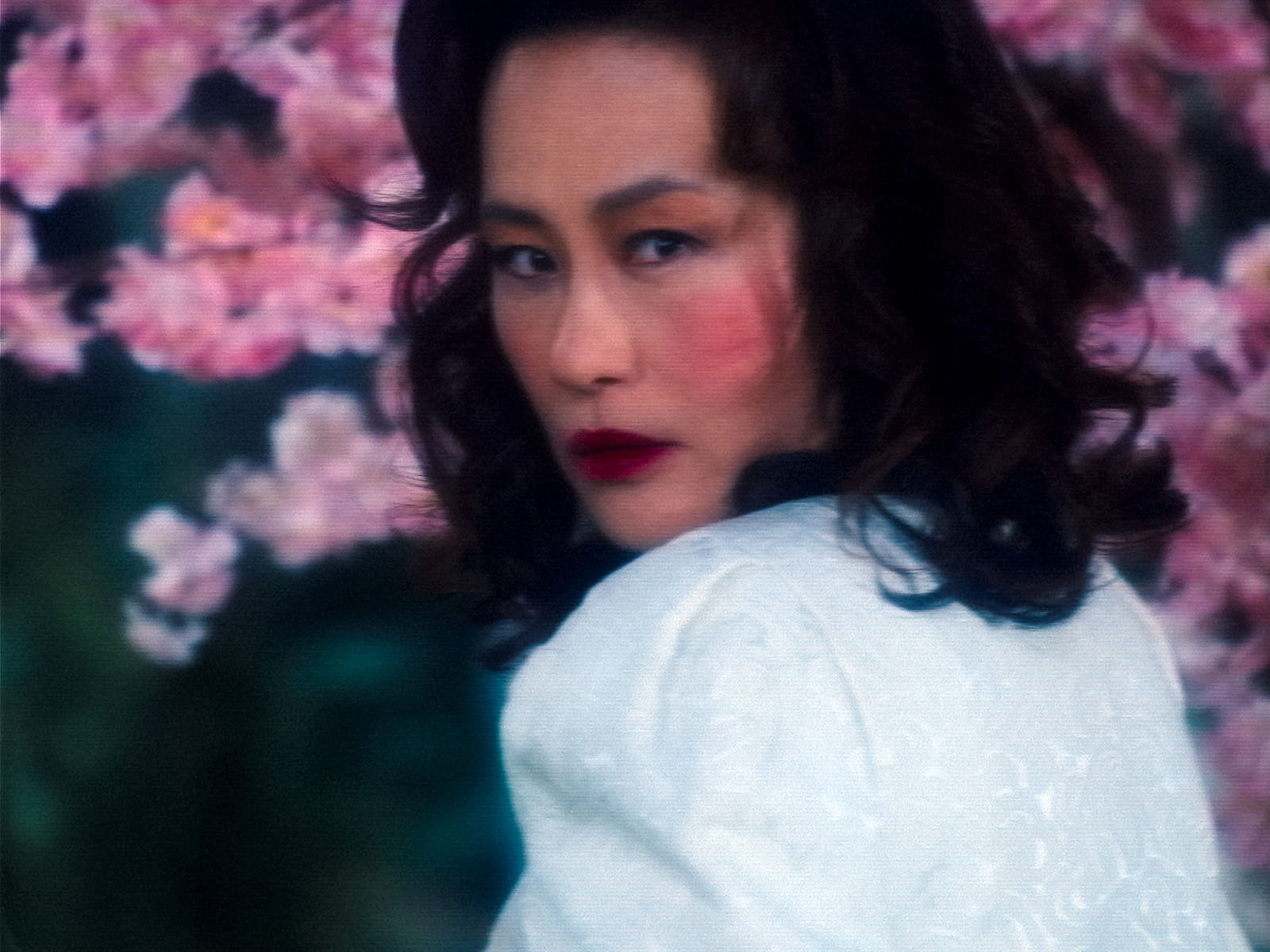
Marissa Mueller: So wonderful.
MF: Something I’m still trying to sort out is the tight structure of the show. Nick, you said in season one it was, “Here’s all eight episodes. Here are the scripts. This is our show.”
Nick Olah: Yeah, there’s a crazy thread strung between every single episode, every single scene. Everything matters. If you take something out, you have to be very conscious of, “What ripple effect is this going to create in the mystery?” You have to tell Marissa or Ivan, “We lost this, so you have to take that out of your episodes now. Have fun doing that.”
We lost this, so you have to take that out of your episodes now. Have fun doing that.
Ivan Victor: I remember specifically in the first episode there was a whole bit with Aniq (played by Sam Richardson) and this white chocolate fountain. We’d gone through various iterations, and then for some reason it was decided to excise that particular beat.
Of course, the first thing I did was talk to Nick and Marissa to say, “That’s gone.” So, callbacks to that in later episodes had to come out as well. They still shot them. We were very good at communicating with each other about what was in and what was out.
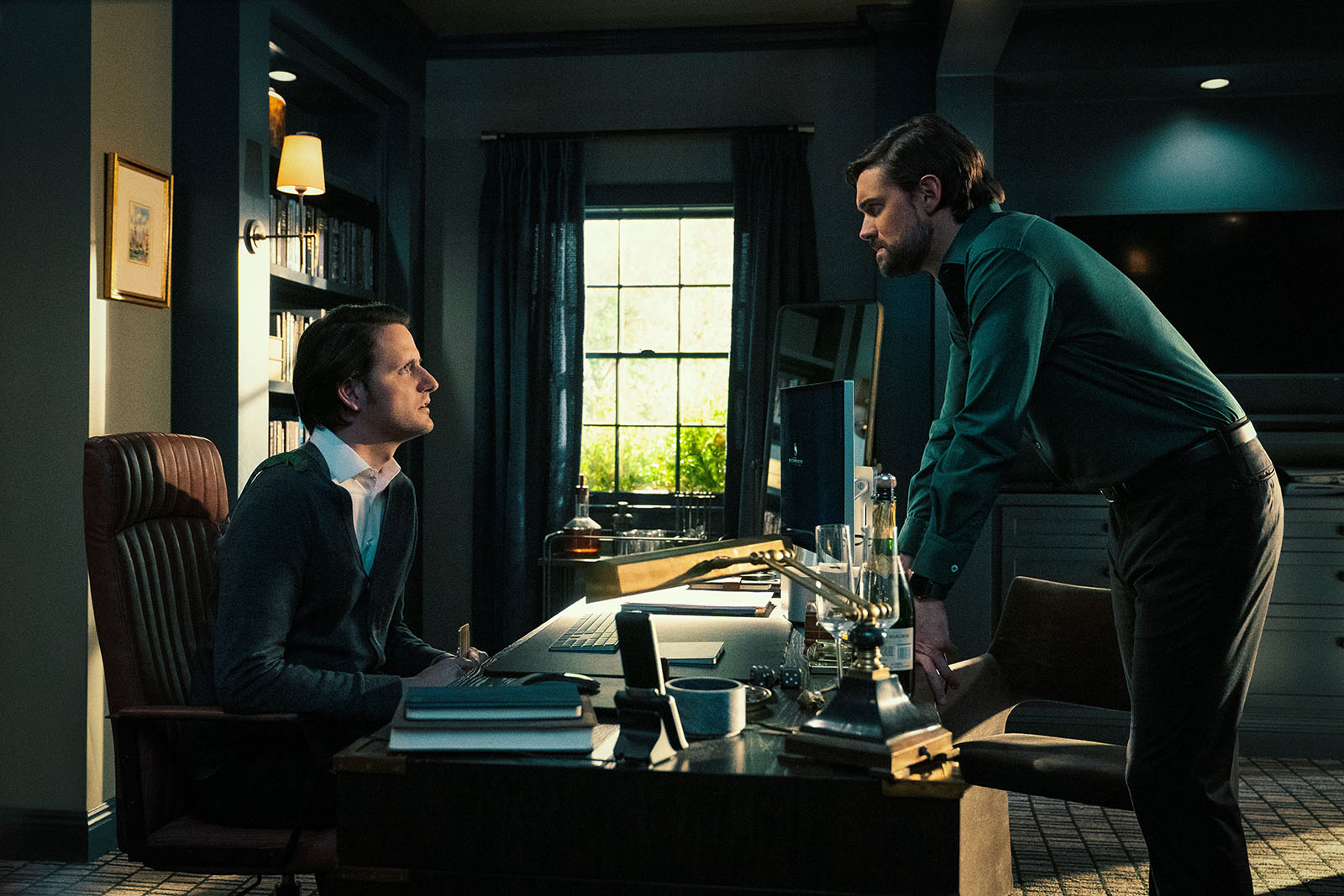
MF: What was the process for that? Ivan, you set the template in episode one. It’s where we first experience the events of the day. Then each episode after that is a different take, a different play on that. It all has to match with the first episode. How did you go about doing that?
Marissa Mueller: We used Slack. That helped because we would Slack each other. We had a channel and we would always be able to use it for reference. “Wait, Ivan said he cut something from that episode.” I liked having a written record of it. We were in the office, but a lot of it was just us messaging while we were all working separately.
MF: Considering that most of the episodes are literally different takes on the same scenes, it seems like you might all be getting the same scenes to cut, but from different perspectives at the same time. What were the mechanics of shooting a show where essentially it’s the same scenes over and over again?
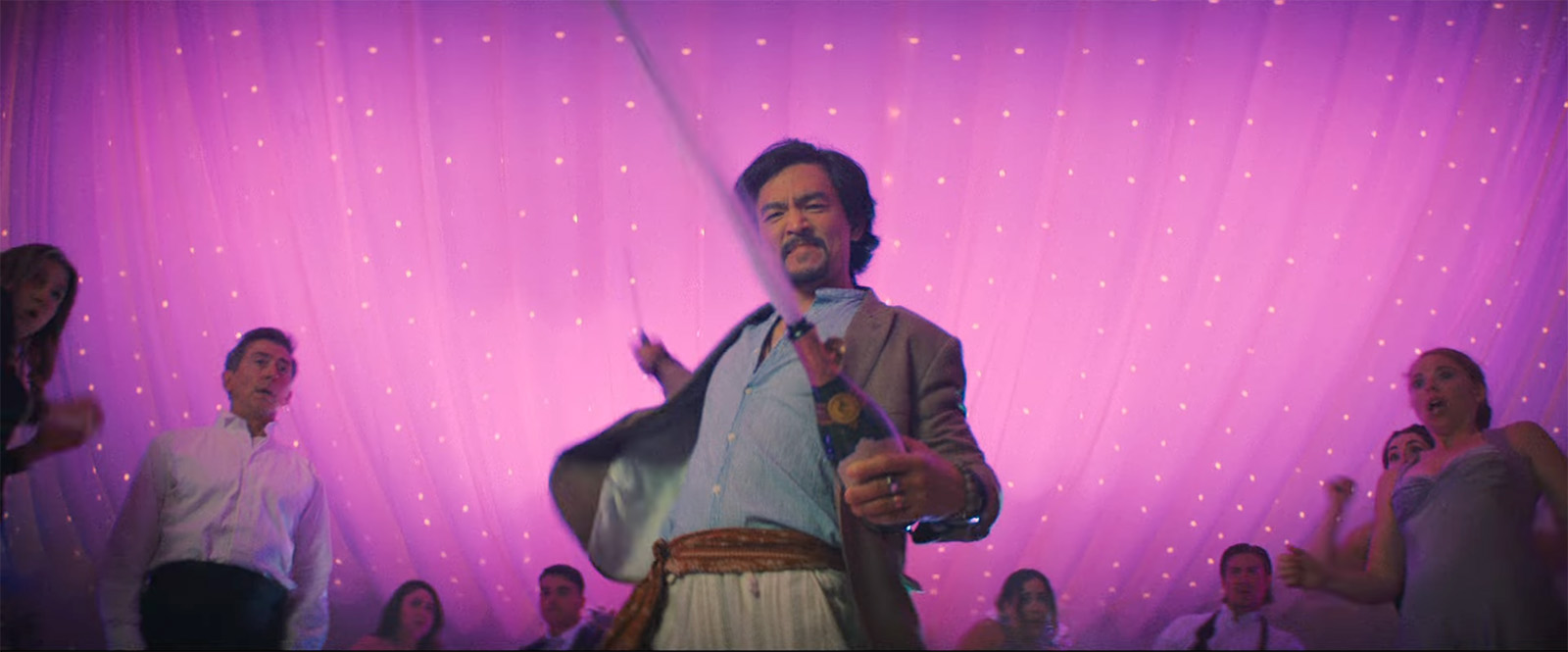
Nick Olah: They tended to wrap out sets. They tried to finish everything that needed to be done on a particular set, like the tent with the wedding reception. We would get an email maybe two days before, “Hey, can you guys just make sure we got everything in the tent?” and we would scramble. We would have some dailies that still needed to be cut. We’d say, “No, we have to cut these scenes really quick just to wrap them out.”
Fortunately, I don’t think we ever were missing anything. I think they pretty much covered it all.
Ivan Victor: There was a fair amount of communication between the different directors about, “We scene this shot from this side of the room in this episode” so then they would deliberately shoot it from another side of the room. That way, the camera seemed to be having a different perspective as well.
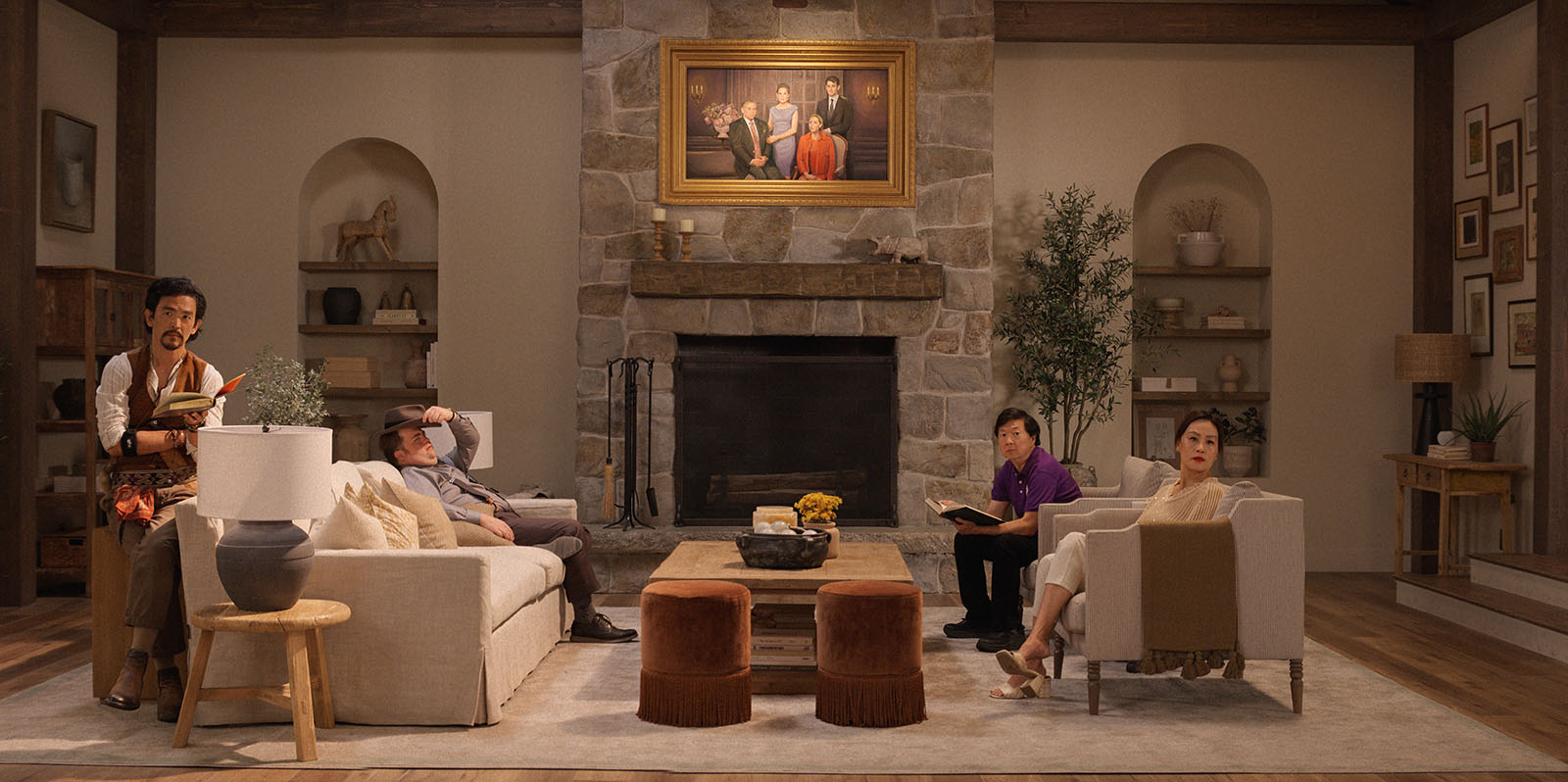
Nick Olah: The interrogation room, for example, is never shot the same. Everyone is seated in different spots, always. I think every director also brings their own unique style with them. The different genres also really helped to create a new environment.
The sets do not feel the same from episode to episode. Everything’s lit so differently and all the lenses are different too. The different genres really help a lot in that.
Marissa Mueller: And it really helps sell that everyone’s perception is different. You don’t know what exactly is the truth. The truth probably lies somewhere in the middle.
Everyone’s perception is different. You don’t know what exactly is the truth.
We would provide scenes. I remember times when, after other directors had shot scenes and we had already received and cut them for episodes, a director would approach me, asking, “Do you have that side of the scene with Sebastian and Isabel in the bedroom? Can I have it for reference? I’m planning to shoot it from the other perspective now.”
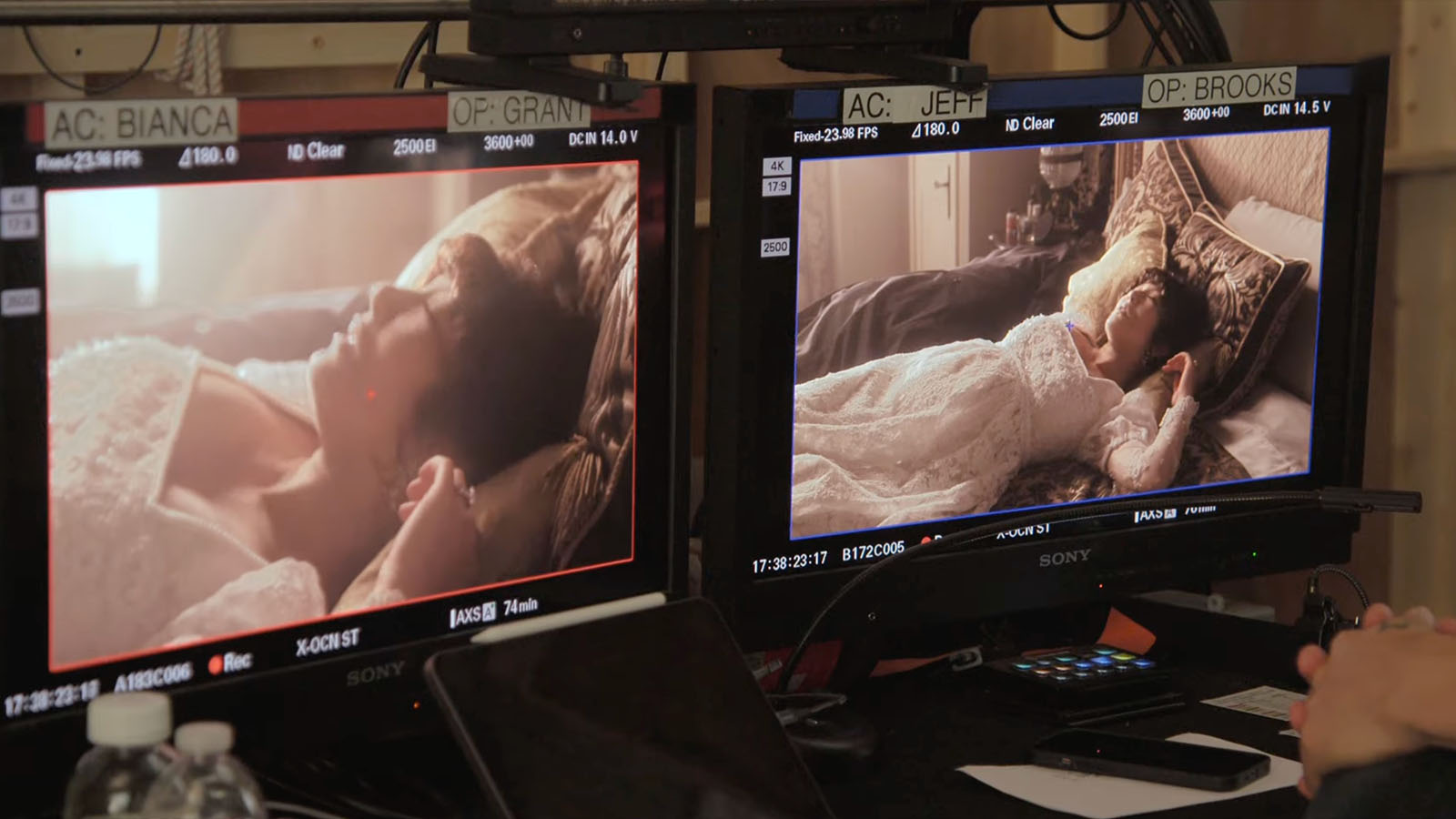
MF: Oh, that’s interesting. I didn’t consider the reference part. I was wondering if you ever “stole” footage from each other. Did you ever say, “This angle was shot for this episode but I actually could use that in mine”?
Nick Olah: I did that once. I took it from Ivan’s episode, the first episode of the season. There’s a push-in on the barn where the rehearsal dinner is being held and Travis walks in. We wanted to first cut to an exterior and nothing like that was shot for my episode. So we stole it. We put on a matte and colored it black and white, added some grain and there you go. Everything is able to be reused as long as you format it correctly.
Everything is able to be reused as long as you format it correctly.
MF: Marissa, you said you were all working in the same facility. Were you working with a shared storage set up where you could look at everybody’s cuts and steal footage that way? Or were you somewhat isolated?
Marissa Mueller: It was my first show back in the office after the pandemic. I think we were all more separated than we would be normally. We wouldn’t pop in as much. Everyone was still trying to be pretty safe.
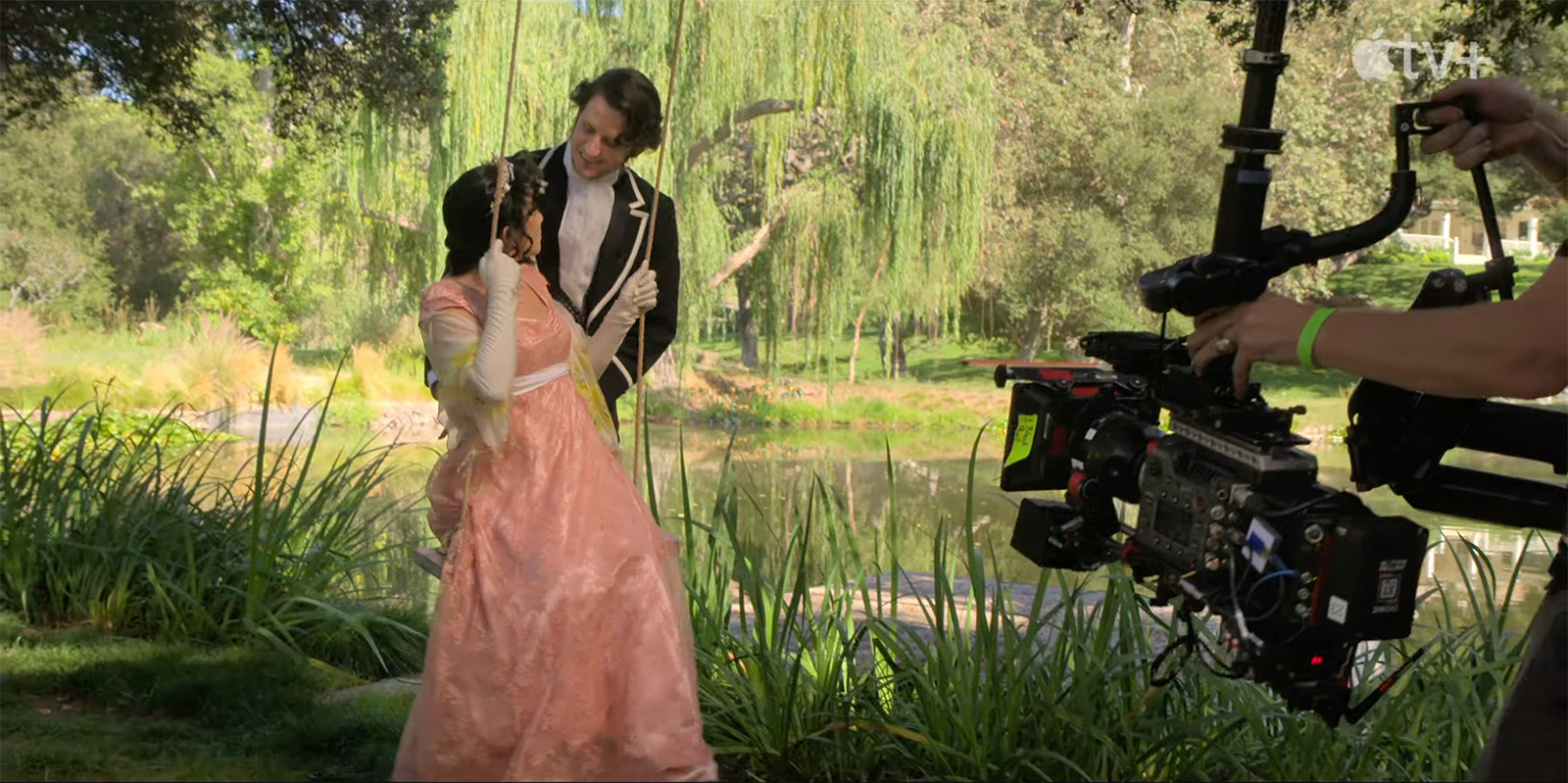
We were all on a local server. It was always easier to ask these two, “Do you have this” rather than go digging. They know their episodes better than anyone. But yeah, we were there. We could pop in. We could go check something on the server if needed.
MF: So you have the interrogation and then the meat of the episode is always the flashback. They’re the “mind movie” told from the perspective of the person who’s being interrogated. They say intercutting is the editor’s best friend. Did you find that you were able to move things around a little that way? Did you have some latitude because of that intercutting between flashback and interrogation?
Nick Olah: Totally. There’s a few times that I can recall. Tiffany Haddish and Sam Richardson are great at improv and extending scenes. Tiffany will go on a five minute run of complete improv. The scene will end on the page and then they’ll be sitting there for a couple of seconds before the director says cut.
Then she’ll say something to the person they’re interrogating. Everyone is so good that they just keep it going. There are things you can use in those moments. If you need a bridge back to reality where it’s not necessarily scripted, or if you are trying to lose time somewhere, you have those pieces. You can find and create scenes that didn’t necessarily exist on the page.
Everyone is so good that they just keep it going. There are things you can use in those moments.
MF: In order for this mystery to work, to unravel properly, it has to be really tight. With somebody like Tiffany Haddish, you know she’s going to go off and have a lot of fun. Knowing that she does improv, how do you track that and work with that kind of stuff?
Nick Olah: For me, it’s just ScriptSync. My assistant editor, Tyler Swezey, does a fantastic job of marking in the script every single thing that’s said. He’ll type out every line of improv. If I need even a word, I’ll just command-F and try to find something. He’ll set it up so it’s easy to see.
Marissa Mueller: Yes, that’s super helpful. My assistant Jesse Cherniak is also really good about that. But I love prepping alts. I have a bin. I’m sure you guys do the same. If there are several ways to end a scene or different outs or a bunch of improv, I like to try it out in the cut. I’ll do a little subsequence and have different versions ready.
I’ll put in what I thought was the funniest joke, but humor is all so subjective.
I’ll put in what I thought was the funniest joke, but humor is all so subjective. Sometimes it’s, “But we could end it with this joke” and they’re all great. It’s hard to choose, so it’s nice to have other options ready.
Ivan Victor: I’m a bit of a locator freak, so I don’t use ScriptSync. My assistant Jessica Wardle very patiently puts locators at the beginning of each chunk of dialogue and then I go into a weird world of numbers and descriptions. I transcribe the improv and, if time permits, I’ll build alts for the jokes.
There were so many alts all the way through, so many great actors. If time permitted, I could have half a dozen alts of different jokes to show Chris or Anthony.
Nick Olah: It helps to pre-cut the alts too just because time is not always there. You want to have everything prepared because they’re on set. They know the alts. If they want to see them really quick, it’s so easy to just pull them up in a little subsequence.
MF: That was a really interesting point, Marissa, about tracking places where you can get out. I have heard editors bring that up before. They joke about, “Would somebody please just close a door so I can end this scene?” You’re always looking for a way to get out if you have to.
Another way to get around things is voiceover. You have the characters being interrogated, you’re doing the flashbacks. A lot of that is their voiceover. Can you make changes in voiceover to fix things? Did you ever mess around with that to fix scenes?
Ivan Victor: We definitely did that.
Nick Olah: Yeah, for sure.
Marissa Mueller: An interruption was always a good thing to add. You could get someone to interrupt them and still be in the “mind movie”, right? But the present-day person interrupts it, and that could be ADR. It’s a good way to get out if you need to.
Nick Olah: Also, it’s a good tool to create jokes that weren’t necessarily scripted. “What if we add a few lines of ADR and have a little banter between them to help the scene?”
Marissa Mueller: There’s a moment in “Danner’s Fire” when Quentin (played by Michael Ealy) says, “I’m a pyromaniac but for sex” and Aniq says, “Oh there’s actually a word for that” and Danner replies, “I’m telling the story!” That was added later. The producer was watching and said “Well, there is a word for that” and it was a really funny joke. That was added from watching it.
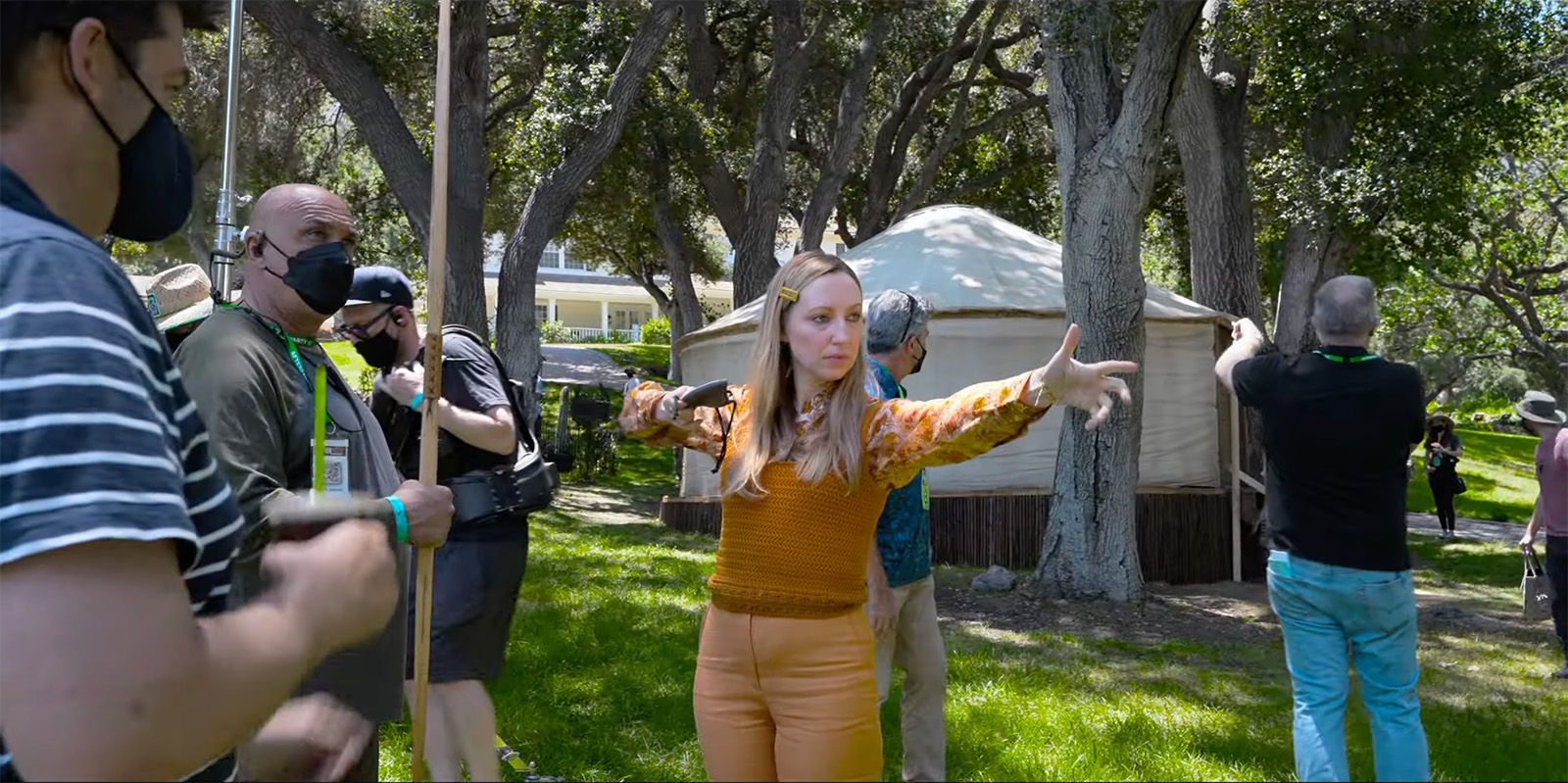
Ivan Victor: We had that in episode five, “Sebastian”, where he’s introducing Judson (played by Will Greenberg) and Jaxson (played by John Gemberling). He goes, “My cousin Judson and his brother Jaxson, who’s also my cousin.” There are a lot of spots for that.
MF: Since you guys have already started doing it, do you feel like walking through the episodes and picking apart the fun stuff that you did? You have to say yes. Otherwise, this interview takes a turn.
Let’s start at the beginning. Ivan, you did the first episode. In just one minute you set up the context between Zoe (played by Zoe Chao) and Aniq.Then you have a rapid-fire montage of all the different characters, culminating in a shot of Grace (played by Poppy Liu) finding her groom dead in bed. You don’t waste any time getting the show going. Tell me about building that whole sequence.
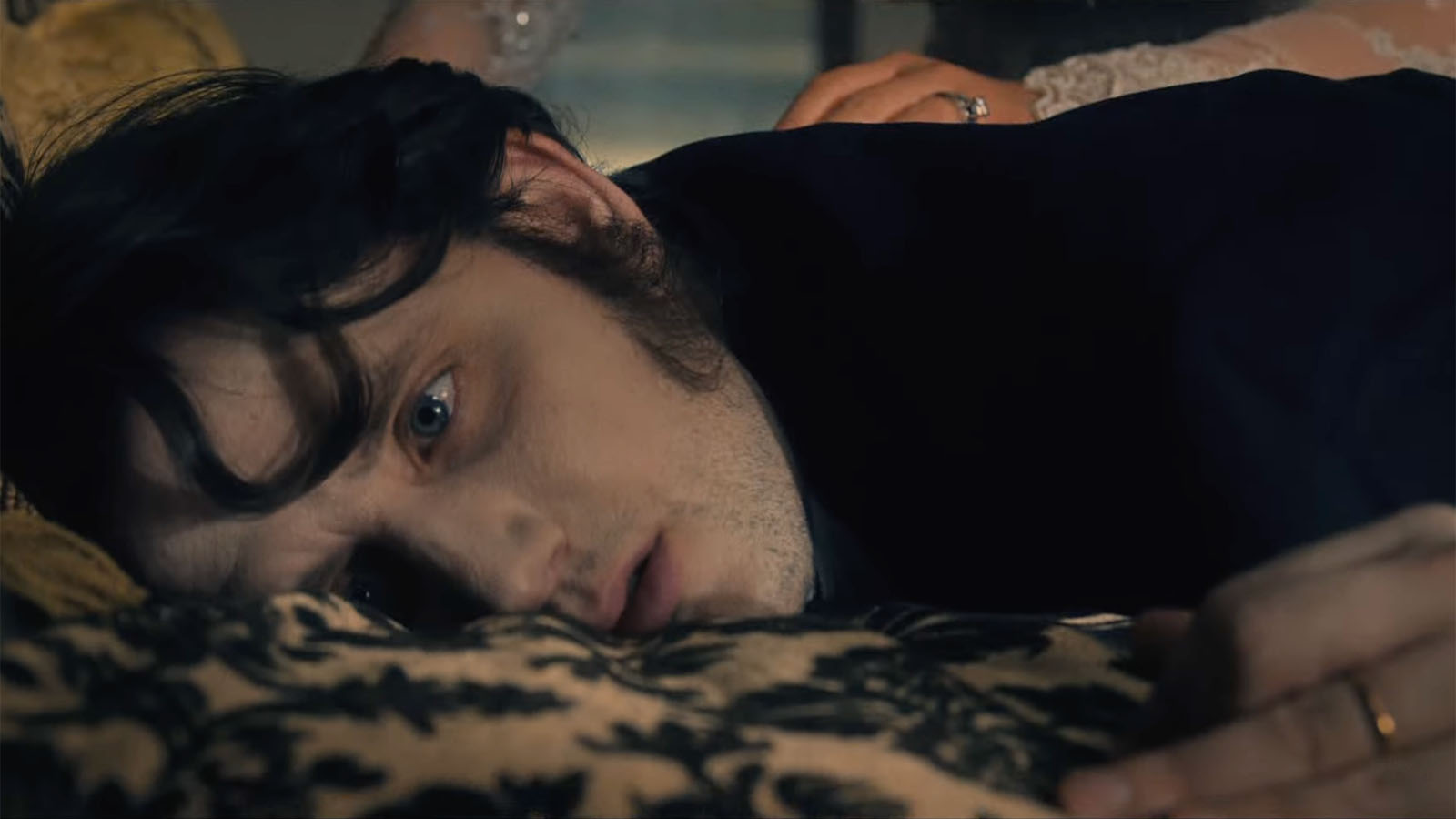
Ivan Victor: The first part was scripted and the montage came much later on. I think Phil Lord had watched it and talked to Chris Miller. One of his notes was that it felt abrupt. In the script, we cut to black and then came back up on the screen.
We worked quite a lot on what shots to put in, whether they were important shots, whether they could be red herrings culminating with the scream. That was something that definitely evolved over the cutting of the episode.
MF: I’m guessing it’s around ten characters in The Afterparty. Sometimes they’re all in the same room together, like in the big living room scene. You see all these characters spread out in different locations in that one scene. Is it really hard to work like that, where you’ve got to maintain that geography and also the eyelines for all of them? On paper that should be easy, but in reality it’s a big puzzle to sort through.
Marissa Mueller: It’s definitely a puzzle. What’s fun is that the actors are so good about doing interesting things that are true to their characters.
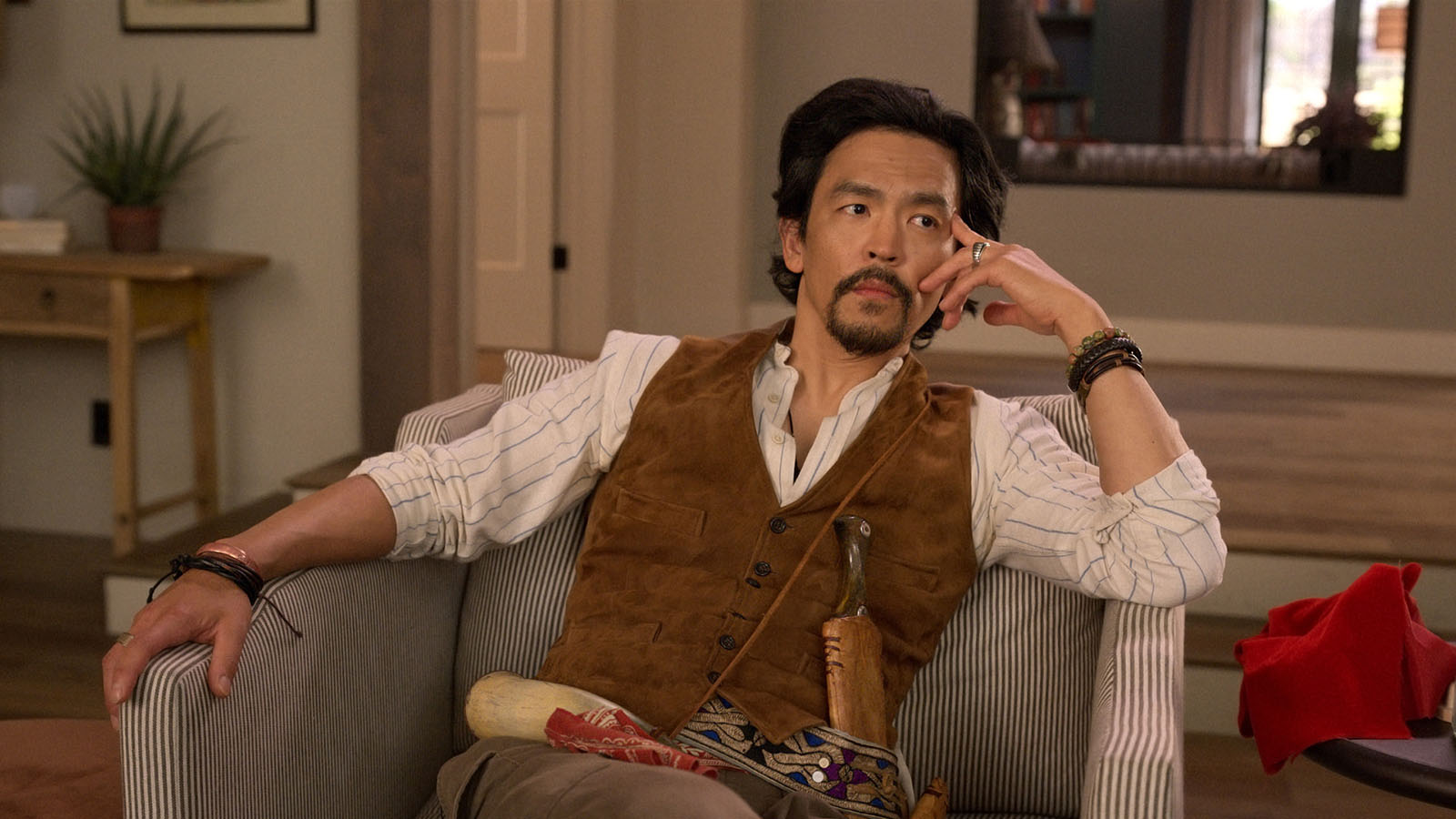
One thing comes to mind. In the ‘Isabel’ episode, when they’re all in the great room and Isabel is telling her story, John Cho is over there stretching. That is so funny, but also very true to his character. It gives you reasons to keep all these people alive. It gives you something to show, which I think helps tell the story.
Nick Olah: Something that I like to do in those scenes is make a stringout of every person’s set up. Not of any of their lines, but of all the things that they’re doing that aren’t scripted. I like to have that when I’m trying to build a joke. If I need something funny to cut to, I have that right on cue. The crew did a great job shooting all that too. We didn’t run into a lot of eyeline issues or anything like that. It was all really, really well planned.
Ivan Victor: As Marissa said, the actors were all so alive in the moment. There was pretty much always something to cut to, which made our jobs a lot easier. Sometimes you work on shows and the actors don’t give you anything. That was not the case here. Then, on other shows, actors give you too much. The vast majority of the time, there was always something to cut to.
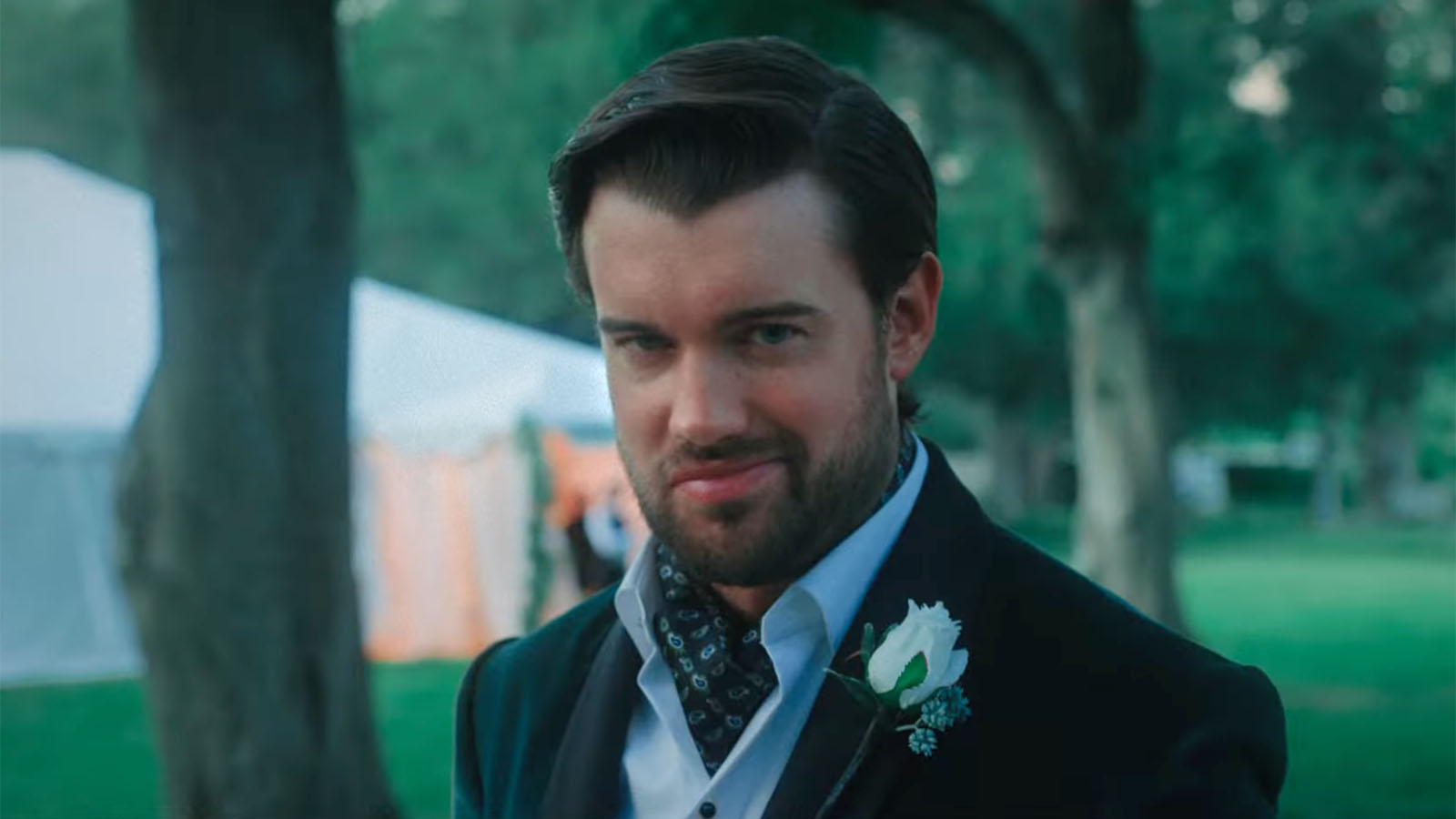
MF: Ivan, you made me realize that I forgot to ask how the show was shot. Is it a multi-cam show? How many cameras are there?
Ivan Victor: It depended on the scene. In the great room there were two or three cameras, especially in the finale, because there was so much to cover. Then there were times when the genre dictated the number of cameras.
Sebastian’s (played by Jack Whitehall) episode is the heist movie. That involved some cross coverage, but it was mainly a single camera because we were keeping very tight eyelines.
I want to say it’s ninety percent real lizard. Maybe ninety-five percent.
MF: Something else that might be unique to what that you worked on, Ivan, is Roxana the lizard. I’m pretty sure it was an articulated thing that they stapled to his shoulder…
Nick Olah: No.
MF: No?
Nick Olah: I want to say it’s ninety percent real lizard. Maybe ninety-five percent.
Marissa Mueller: Real lizard.
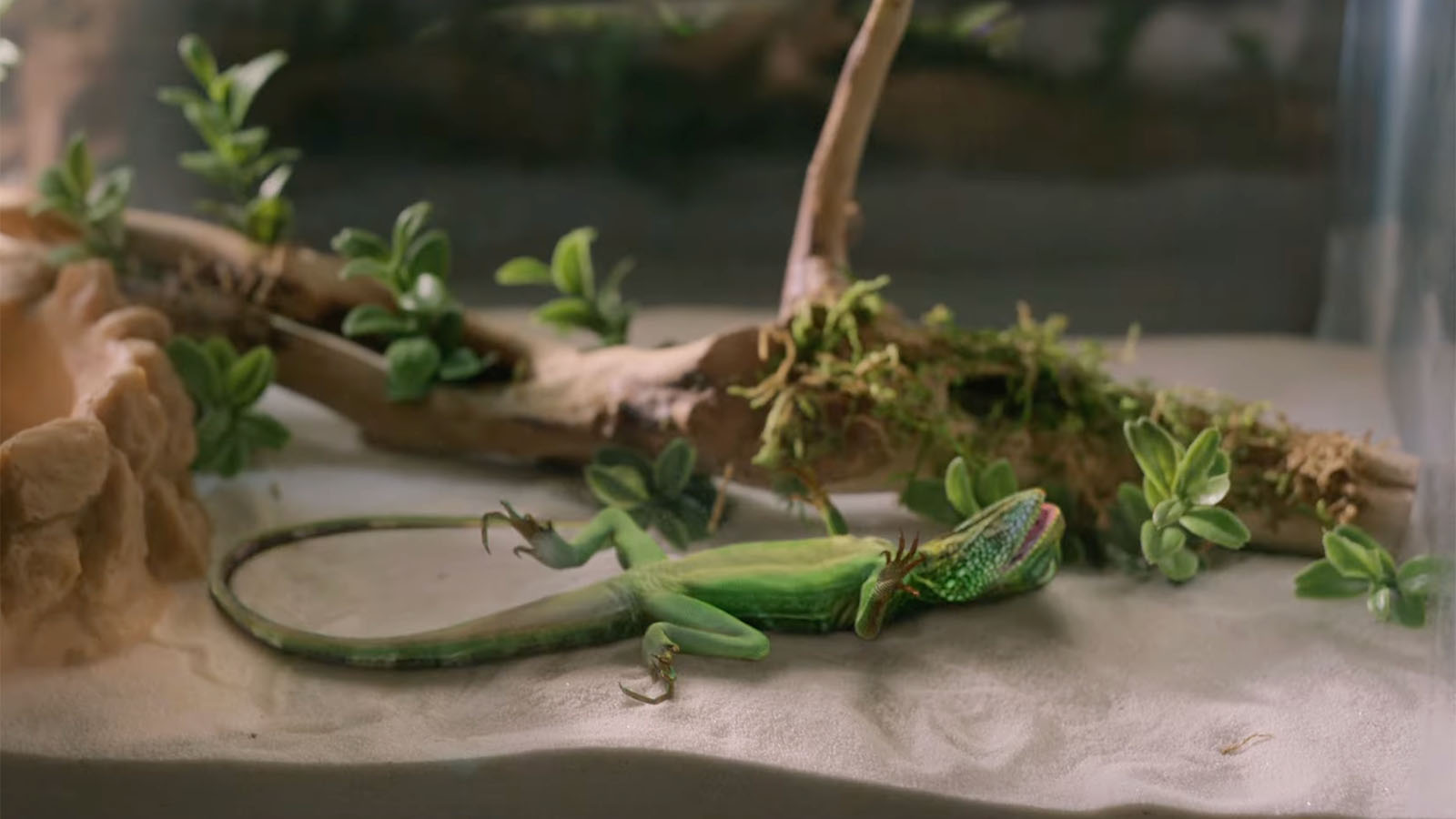
Nick Olah: There were four of them.
MF: Were they siblings?
Ivan Victor: Yeah, they’re siblings.
Nick Olah: I think they all had the same name. They had a lizard wrangler.
Ivan Victor: They did some animatronics, for example, when Aniq is feeding the chocolate stuff. Roxana wasn’t gobbling chocolate and having a spit bucket between takes.
MF: I kind of figured! That’s why I thought that was CGI and then everything else was a dummy lizard.
Marissa Mueller: She was very still a lot of the time. But then in certain takes she would start crawling all of a sudden. Then you’d have to cut around the fact that now her tail is up by Edgar’s head. (Edgar is played by Zach Woods.)
The “lizard pass” was definitely a part of the process in visual effects.
Nick Olah: The “lizard pass” was definitely a part of the process in visual effects. “Where is the lizard sitting on his shoulder now? Is it bumping anyone, since it’s shifted?”
Ivan Victor: I spent a lot of time in my locators describing where Roxana was on Edgar’s shoulder.
Nick Olah: That’s smart.
Marissa Mueller: Nick, I remember it was too hot in “Ulysses” during that scene outside. Did they just remove Roxanne in general or did they have a fake one for that scene?
Nick Olah: They shot the first take where Edgar shows up in Patagonia with the real lizard. I think it was 105 degrees that day. They were all dressed up in these suits and big clothing. The lizard was kind of freaking out on his shoulder. Then Zach Woods said, “You guys, I don’t think it’s safe for the lizard. I think we need to put it in later in post.” He was the lizard advocate in that shoot.
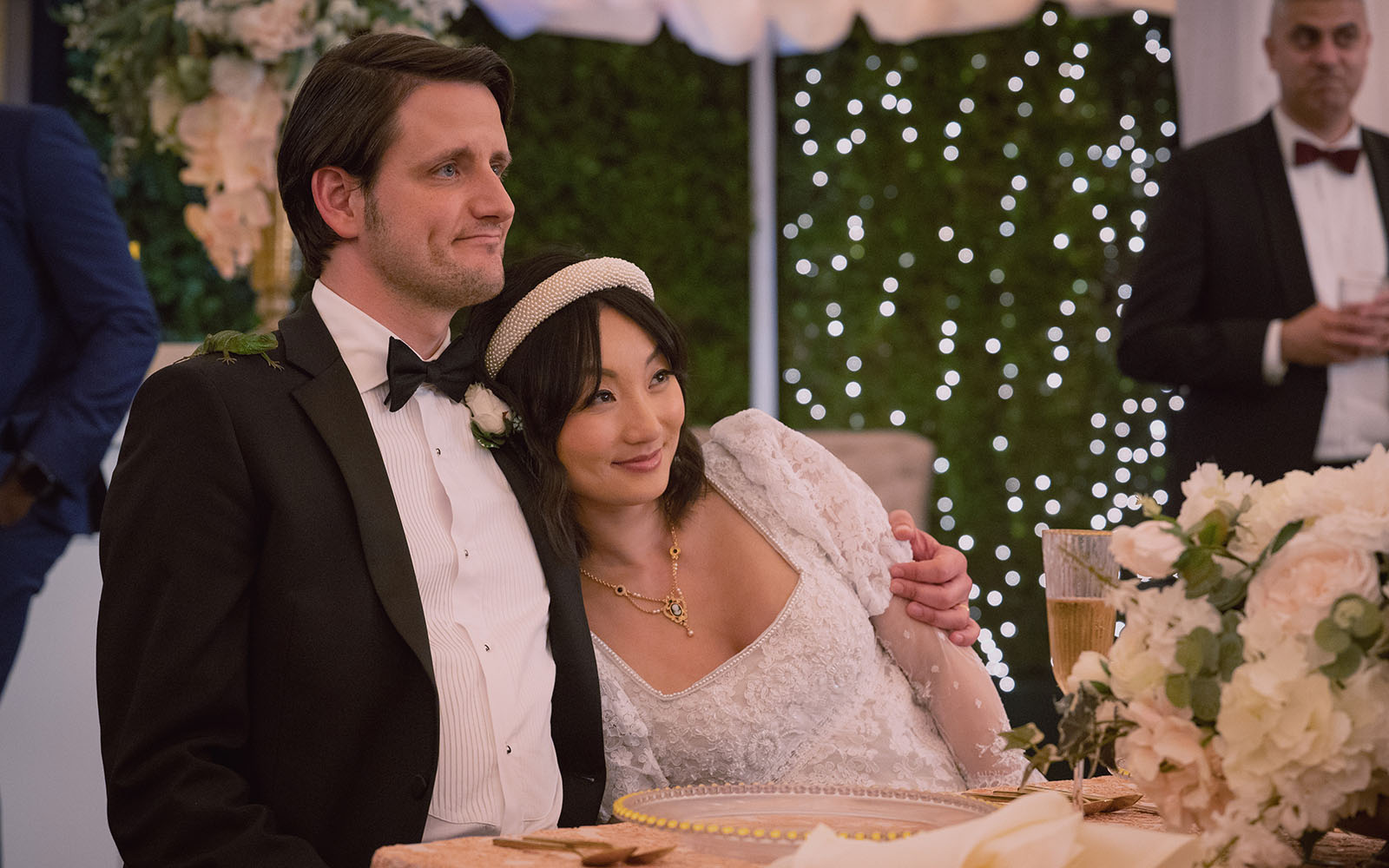
MF: I can’t believe it. I feel like we have to start all over and make this all about the lizard. I’m just floored.
Marissa Mueller: Another fun fact, speaking of Zach really advocating for the lizard. The lizard would sometimes fall off of his shoulder and he would stop and say, “Oh my gosh, are you okay?” The wrangler would be running behind saying, “Oh, he’s fine. He’s fine.” But it would just fall. “Oh, he does that. That’s a thing they do.” It was so funny. Zach was always very concerned for the lizard’s safety.
MF: I have to do my own personal reset after learning about the lizard. That’s where you come in, Nick. You’re going to save me. We’re going to talk about the next two episodes, 202 and 203.
For these episodes I want to focus on sound. For the episode “Grace” you have that Merchant Ivory period music going on. How do you put an episode like that together when there’s such an emphasis on the score?
Nick Olah: One of my first steps for working in these genres is really diving into score from the films. The score is what brings it alive. For “Grace”, I pulled from Pride and Prejudice and Sense and Sensibility. It’s outstanding stuff to temp with. Sometimes you get in trouble temping with stuff like that, but for this, you have to. You’re not going to find anything else that’s going to match the cut.
Then it gets handed over to the composers. They ran away with it and just did a phenomenal job. I was blown away hearing the final cues in the mix.
Same thing with “Travis”, the noir episode. We had a great music supervisor, Kier Lehman. His team was able to find so many old libraries of things like Double Indemnity and Sunset Boulevard, The Big Sleep, The Maltese Falcon. It really helps you as an editor to cut to that score.
It really helps you as an editor to cut to that score.
MF: A lot of times when you’re paying homage to things, you want it to be a subtle reference. You try to avoid being called out for it. In your case, you want to be on the nose. That’s part of the gag, for people to go, “That’s the score from Pride and Prejudice!” No real question there. That’s just me babbling.
Let’s talk about the “Travis” episode, which you said was the film noir. Any time Travis is in a scene, there’s physical comedy. I noticed that the sound design plays a big role in the comedy. Sure, it’s funny to watch him fall over the hedge, but the sound of him hitting the ground and the timing is what makes the gag work. It’s not just the stunt itself. Tell me about doing that kind of sound design.
Nick Olah: For Travis’s episode, we really tried to stay true to the period. All the sound effects we used were mono sound effects. Our mixers ran everything through a filter to get it to sound like an old noir film from the 1940s.
I remember Chris Miller saying that they had no idea that Paul Walter Hauser was able to do any of that physical comedy. It was a total shock to them. He completely leaned into it and everyone loved it. Honestly, some of the funniest gags in the entire series are just Travis falling down.
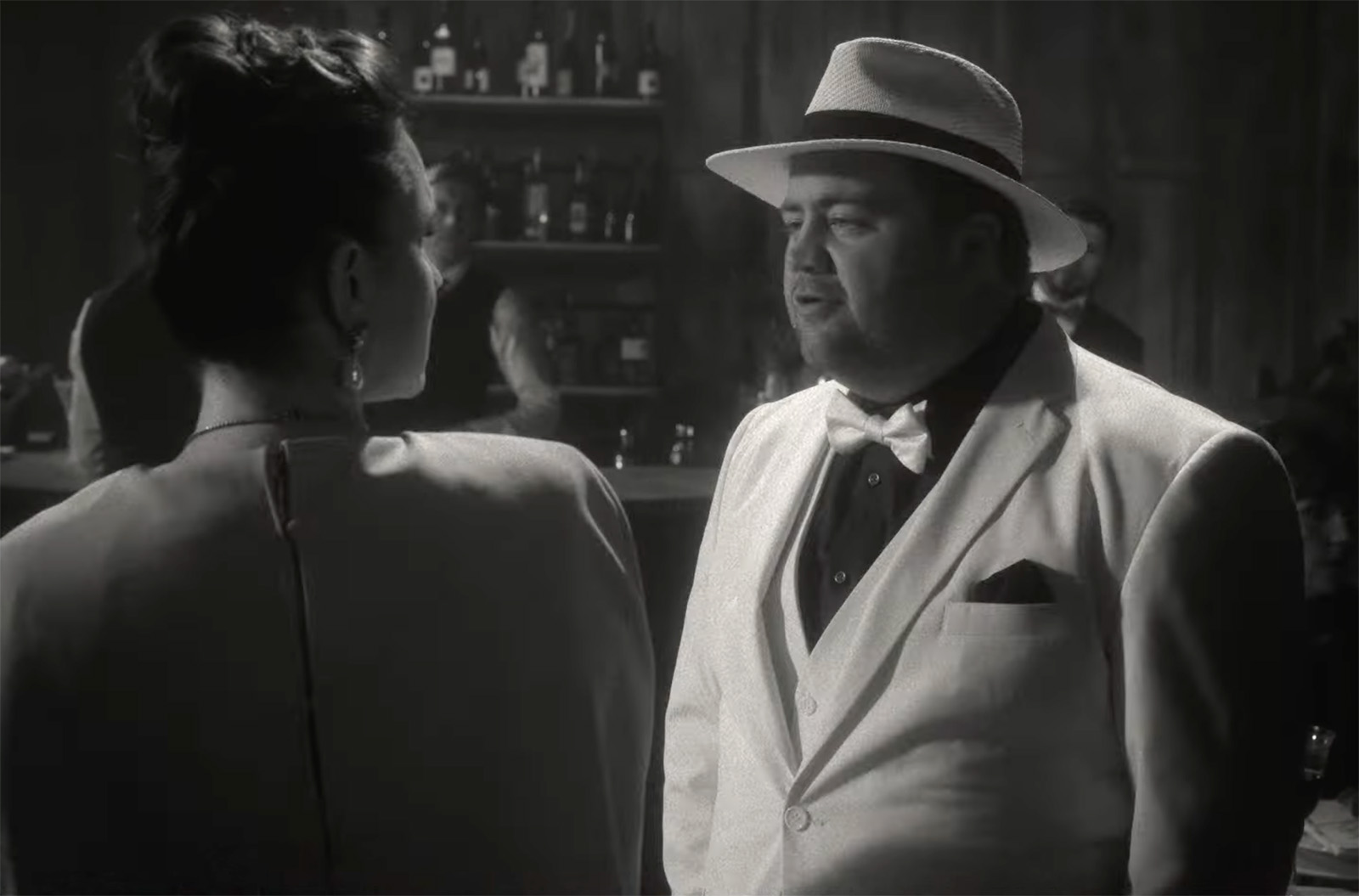
When he’s going to Grace’s door, he did a take where he slipped on a pistachio shell. I don’t think I added any sound to that. The production sound was just a huge thud. It was actually a painful thing. If production sounds good enough to use, I’ll drop it in and sweeten it later. But I leaned into that one for sure.
MF: Marissa, you’re up next with what we call the Wes Anderson episode. It’s a lot of cinematography in terms of color palette and the grain and aspect ratios and framing.
But you also have this really fun, I’m assuming, digital stop motion sequence in the middle of that. Did something like that come to you already edited? Did you get that as a whole block that you just dropped in?
Marissa Mueller: I had very little to do with that. Chris obviously has amazing animation people. They had recorded a lot of the voiceover for that scene on set when they had downtime. Most of it was recorded by our sound mixers, so it was professional and usable. A few of the lines they couldn’t get, so Chris got on his phone on set when he could.
They got me all of the voiceover and I cut what they call a radio play of the scene. It’s everything you hear, everything in the scene audio-wise. Chris came in and listened to it and signed off on it. That had sound effects and some temp score in it. Then we got that over to Max Winston, who was the animation director, and they ran with it.
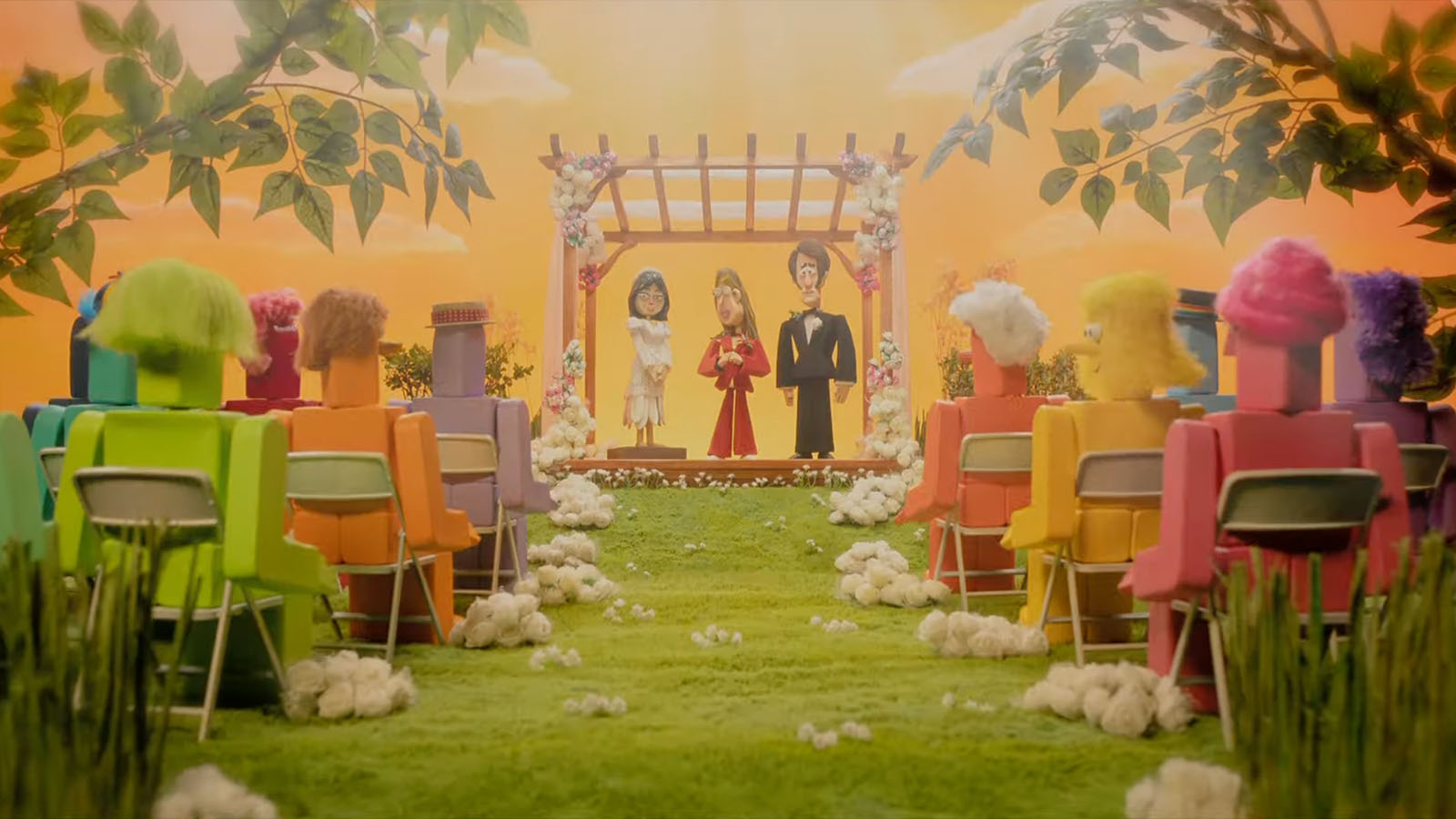
I just had the radio play with the words as an animation sequence in the cut. My assistant Jesse put it in a fun Fantastic Mr. Fox font. That was in there forever.
When we got close to locking, we got a temp version. It had some storyboards in it, some animation. We cut that in so we could get the transitions in and out of it. Then I saw the full thing on the mix stage. That was really fun to see for the first time after only hearing it for so long. It’s so beautiful. I loved it.
MF: Ivan, you had 205, the episode “Sebastian”. It’s a heist-y, Ocean’s Eleven kind of thing. Tell me about developing the style for that. There’s a lot of picture in pictures and you could play with wipes and aspect ratio changes.
Ivan Victor: A lot of that was in the script. The picture in picture section was always in the script, who was doing what and where. I had a fair amount of freedom in the early stages to deal with what size or shape everything would be and in timing all the action out. It pretty much stayed the same from beginning to end in terms of trying to keep it interesting.
I looked at The Thomas Crown Affair and it blew my mind. They had sixty-four different images wiping in and out, and it was all film articles. I felt humbled and quite inadequate at what people were able to do God knows how long ago.
We felt the wipes were a good way to transition because, in those movies, they use them a lot. We used them to play with screen direction and action.
There were a lot of speed-ups and slow-downs as well. Various actions were shot with that in mind, with camera pushes and swish pans. We used sound effects to enhance those moments as well. Those kinds of things are a playground. They’re so much fun.
MF: Do you get to mess around with the titles of your episodes? Do you create something that’s evocative of that genre? Is that something that’s given to you, or do you hand it off to your assistant and say, “Figure it out”?
Nick Olah: For a couple of my episodes, it was actually Chris Miller. He loves doing stuff like that. He would Photoshop a temp version of the title and then hand it off to us. Did he do that for you guys too?
Ivan Victor: He did that with episode five. He’s a brilliant guy to work with. You would be sitting there working on a note and he’d have his laptop open. While you’re doing the note, he’s working on the title. I used the original “Aniq” font and title from the first season and then we added the “Aniq” to the sequel, so that stayed the same.
Marissa Mueller: My assistant and I would get together and talk about what the title might look like. Chris did a few versions for the temp. For “Danner’s Fire” we had it look like that genre and it had some fire on it. Then for “Hannah”, the Wes Anderson episode, we had to decide on the color. Chris definitely did that in the room with me. I remember he was comping an effect in Photoshop for something while we were working.
Nick Olah: He does everything.
Ivan Victor: We would be in there working and he’d be doing stuff for Into the Spider-Verse at the same time.
Nick Olah: It was so funny. I learned this very late in the process. He’d come in, we’d go through stuff, and he’d leave you with notes for things to do. He’d say, “Oh that note, just do that on Nick O’clock.” Then I was talking to Marissa one day and I found out that he has different time sayings for every editor he works with. What was yours?
Marissa Mueller: Mine was “Marissa Time”. What was yours, Ivan?
Ivan Victor: We must be twins. I had “Ivan Time”.
Marissa Mueller: “Nick O’clock” sounds good though. I like that one.
MF: Let’s talk about “Danner’s Fire”. That is the erotic thriller episode. Think Basic Instinct. Think 9½ Weeks. Think Body of Evidence, even Backdraft, I found in one particular scene. There’s a lot we could talk about in that episode, but I think we should talk about the 9 ½ Weeks kitchen sex scene.
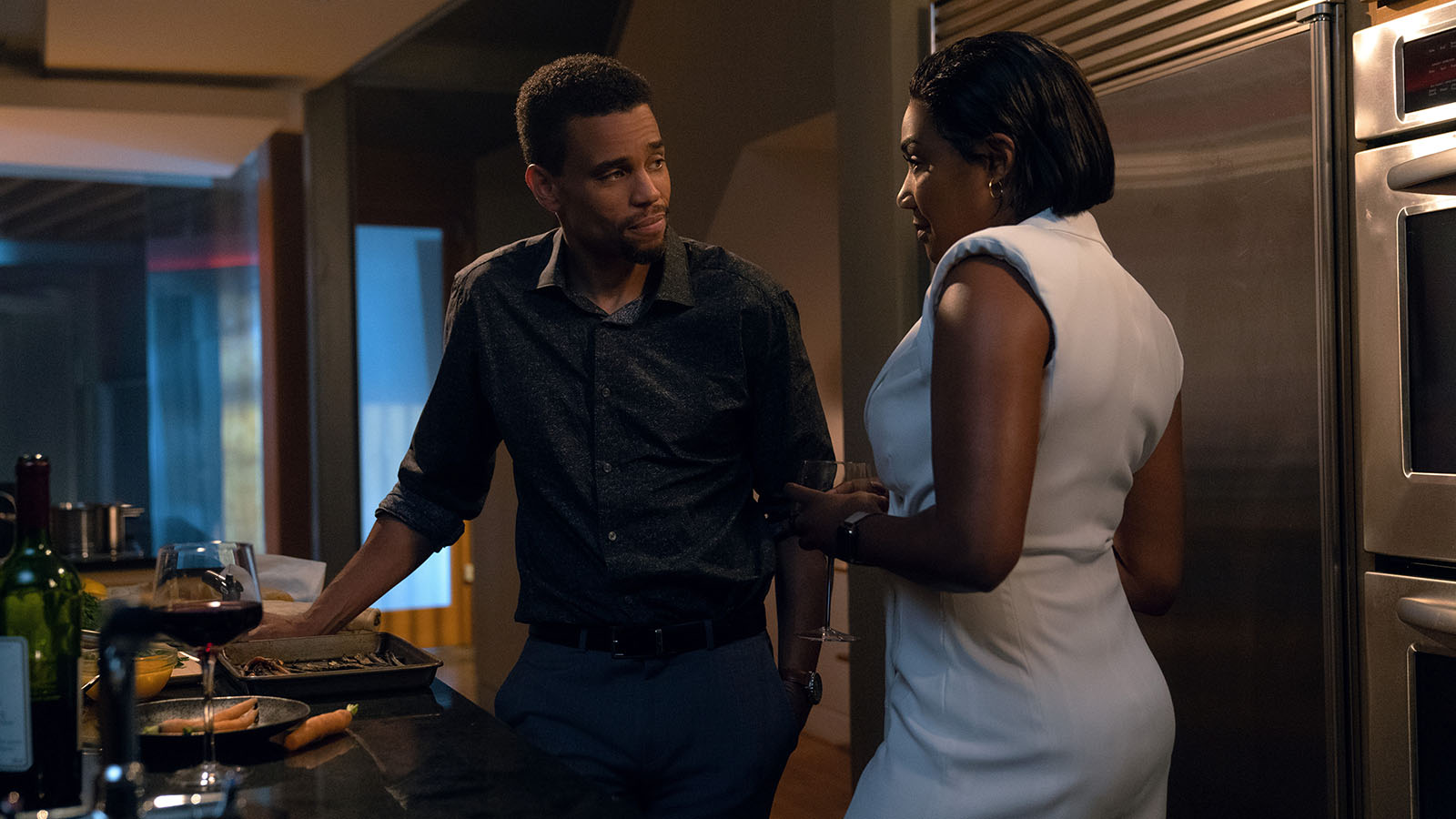
Marissa Mueller: I knew that was gonna be the scene.
Nick Olah: I’ve never looked at my fridge the same after seeing what you did with that.
MF: I’ll never eat a bagel again.
Marissa Mueller: That part was so… I mean, they did so much. I think my first stringout of funny things was around nine minutes. There was so much. It was just a progression. It was a really long take. Tiffany was so down to eat the food, to try the food, and Michael Ealy was so serious. That scene really works because their passion comes through.
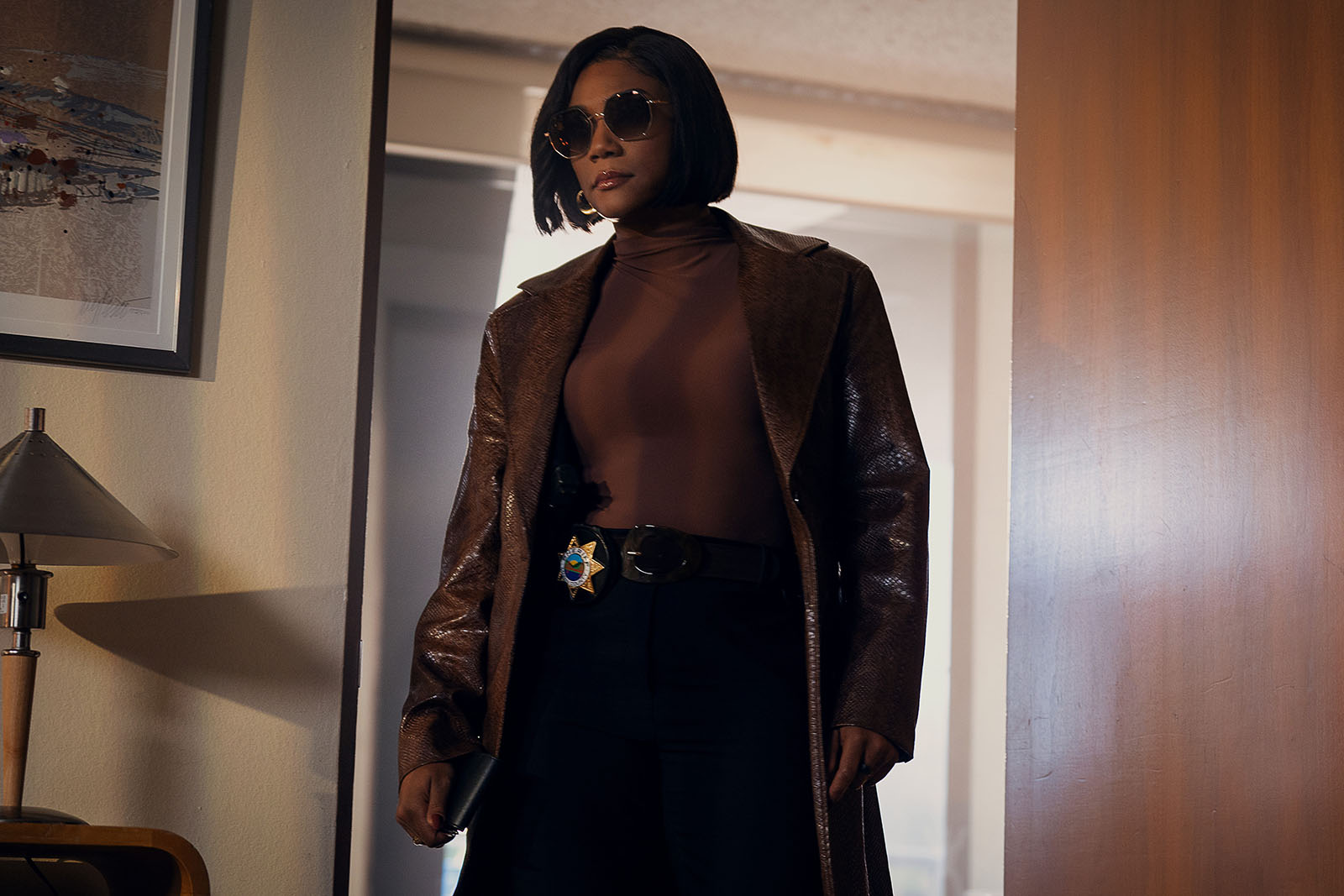
You’re able to look at this and say, “This is so ridiculous!” It was just so much fun. We trimmed it way down. Chris really loved when Michael Ealy had the macaroni poured on him. The scene kept getting shorter and shorter but that particular part… “Do we have any more frames? Do we have any more frames?” That got longer and longer and longer.
Nick Olah: How long was your first pass on it?
Marissa Mueller: My first pass was probably not longer than an actual minute. Every time I went back through I would start cutting it down and down and down. You get to use all your favorite parts. Then the camera pans over to show him just loving getting macaroni poured on him…
You can’t just go ‘spaghetti!’
We also made sure that there was some normal food in there. There’s berries, there’s whipped cream and chocolate sauce. We wanted to intersperse the ridiculous food and make sure there was a progression. You can’t just go “spaghetti”, you have to go, “Oh, here’s a berry. Here’s some whipped cream. Oh, wait, what? There’s spaghetti and a meatball!”
Ivan Victor: I think you’ve created some rules around that, Marissa.
MF: I don’t know how you organize your fridge, Marissa, but I don’t have normal food and then crazy sex food in my fridge.
Marissa Mueller: Ketchup and mustard has to go later.
Nick Olah: Don’t start with the close up. Start wide and then go into the close ups. Don’t start with the bizarre food. Start with the normal stuff and then go into the bizarre.
Ivan Victor: I noticed you were very different in the commissary after you’d cut that scene.
Nick Olah: That’s probably why they closed the commissary. They weren’t remodeling!
Marissa Mueller: We must avoid all food.
MF: I’m glad I let you run with that because what I wanted to ask you about was the music. I can’t remember the exact song…
Marissa Mueller: “Freak Me” by Silk is where we landed.
MF: That’s it.
Marissa Mueller: That was probably the thing that changed the most, other than it just getting trimmed and moving certain foods around. Finding the right song was important.
With Tamra Davis, the director, we definitely did more of an homage to the “Bread and Butter” scene from 9½ Weeks. But when Chris was in with Anthony King, he said, “Let’s try some different sexy songs that could be from the 90s.”
That’s when we landed on “Freak Me” and then “Freak Like Me” when they’re getting it on in the office later. I think it just works really well, because what they’re doing is all so freaky.
MF: Yeah, it does work well. But there’s also songs like “Africa” and Hansen’s “MMMBop” that are locked into the storyline.
Marissa Mueller: “MMMBop” was definitely locked in on the script level.
Nick Olah: “Africa” was not. I think “Africa” just came from Chris. Ivan, when Ulysses (played by John Cho) arrives in episode one, did that come later on, putting “Africa” in there?
Ivan Victor: Definitely, and I wasn’t sure where it came from. Katie Greathouse, our music editor, one of her passes had “Africa” in it. Then, obviously, it was in Ulysses’s episode later on.
Nick Olah: Yeah, I think at first it was in “Ulysses”, and then maybe later on got it moved up as sort of a theme for Ulysses. I can talk about “Africa” and the “Ulysses” episode later, but…
MF: Well, that’s next, so tell me about “Ulysses”, episode 207. Tell me about “Africa”.
Nick Olah: Chris said early on that he had “Africa” in mind. I remember, I tried it with the original song in there, and it didn’t feel epic enough. I probably shouldn’t say that because it is an epic song, but to fit the epic romance genre, I wanted more instrumental stuff.
So I did what every music supervisor would tell you not to do. I went to YouTube and searched until I found some random version of “Africa”. Sure enough, it stuck and we were able to clear it and keep it in, and it’s great.
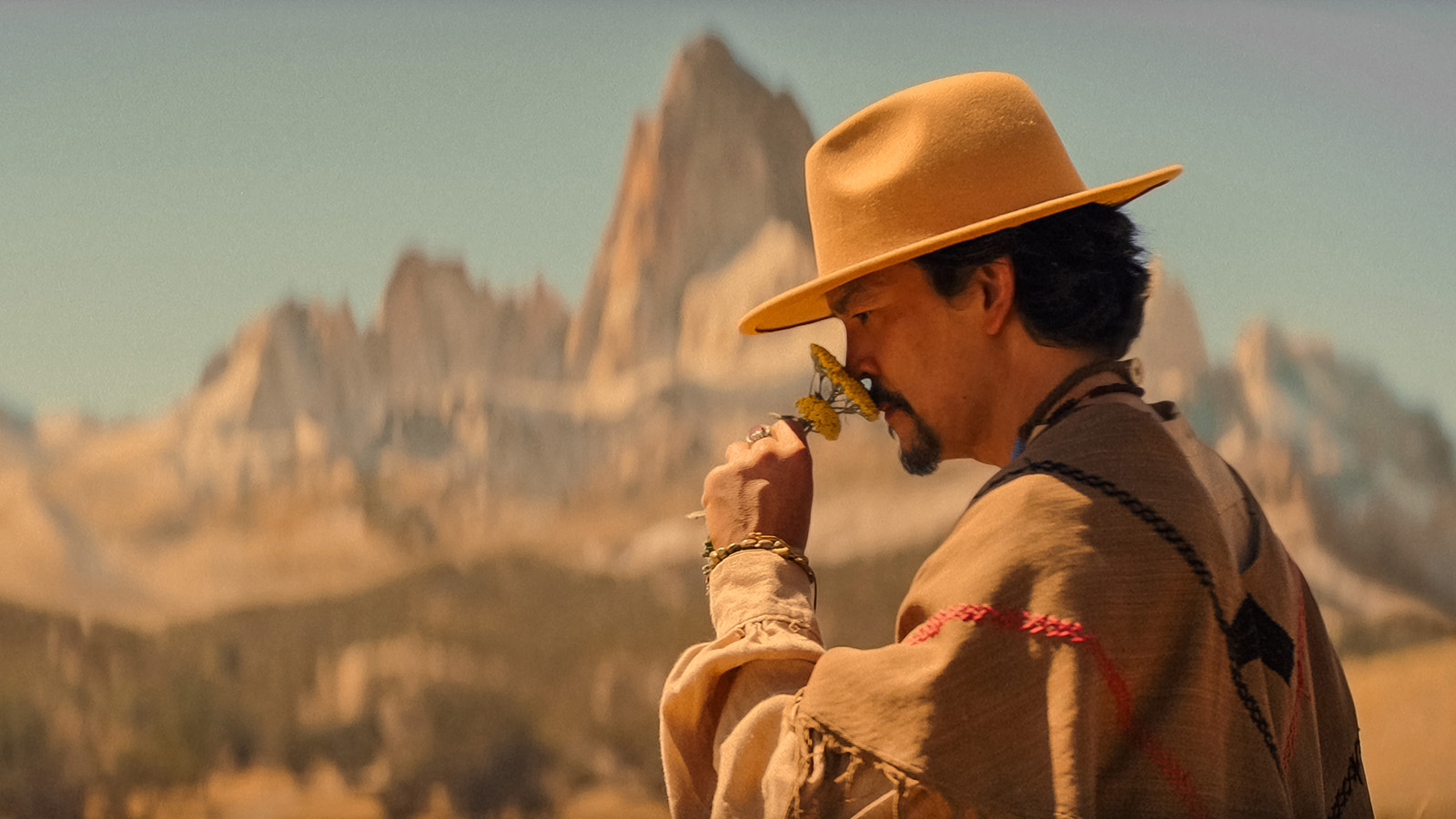
MF: Well, that episode, “Ulysses”, is what I call the Montage-A-Palooza episode. You have the “Sway” sequence, you have the beach sequence, you have the “Careless Whisper” sequence, you have the “Macarena” sequence. There’s so many montages in that episode.
How was that episode different, when you’re now working together as opposed to working on your own?
Nick Olah: It was so much fun to work together on the episode. Should I say how it came about?
Marissa Mueller: Yeah, definitely. It was originally supposed to be Nick’s episode. Nick, tell us what happened.
Nick Olah: I guess it was supposed to be mine, but I got COVID.
MF: It happens.
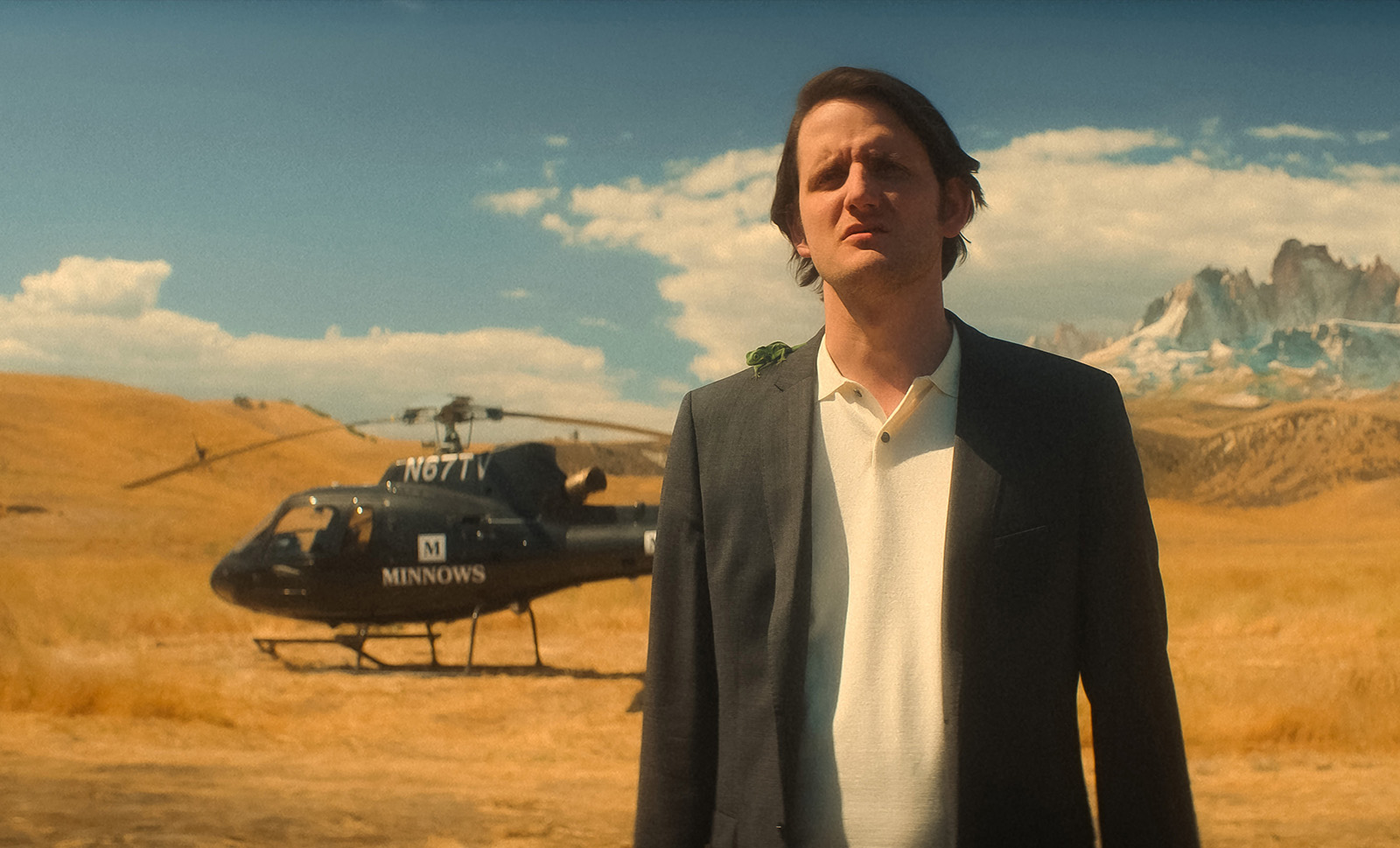
Nick Olah: So I was out for about seven days. At the time, I was supposed to be doing my director’s cut on episode 202 with Anu Valia. I was holed up in my bedroom. We had a hybrid setup, but my desk was not in my bedroom, and I could not leave my bedroom.
That put us behind and thankfully Marissa stepped up to help me out. Honestly, I’m so thankful that she did because the episode plays so well. Our cutting completely blends together.
Marissa Mueller: It was really fun. I was lucky, of course. Who wouldn’t want to cut another episode, let alone the “Ulysses” episode? It was so much fun. I felt bad that it came out of Nick getting COVID.
Nick Olah: Oh, I did not care at all. I am so happy that we got to share that.
Marissa Mueller: I was in a really good place too. We were in a good place to take a pause on episode four. We were a little ahead of schedule because that was one of the few episodes that was actually not super long. It was a quicker process to get it to the studio network.

I remember that Annie Court came in and said, “Oh, you have some downtime? Do you want to help on episode seven?” and I said, “Absolutely! Of course.”
But I also wanted to be respectful. Obviously, as now you know, Nick doesn’t care. But I knew it was his episode. I wanted him to be able to cut everything he wanted to cut. I wanted him to be involved as little or as much as he wanted. I ended up staying through the whole thing and it was really fun.
Nick Olah: The way we divided it up really worked out. The first half is pretty much all me. Marissa has the second half, except for a few scenes on either side that we still cut.
Marissa Mueller: We talked about it. If we do it again, we’ll just break it cleanly.
MF: Moving on to episode 208, that’s all Instagram style, that’s all TikTok style. You’ve got all these little details that you could throw away, but you find ways of putting gags in there. Were you cutting the raw footage and then somebody else, your assistant or the VFX person, doing the rest of it?
Nick Olah: Yeah, exactly. It was my assistant Tyler. That was such a unique episode. Apple really wanted to make sure everything was correct. We probably spent a full day temping in, “What is this screen share gonna look like?” and testing that sort of stuff.
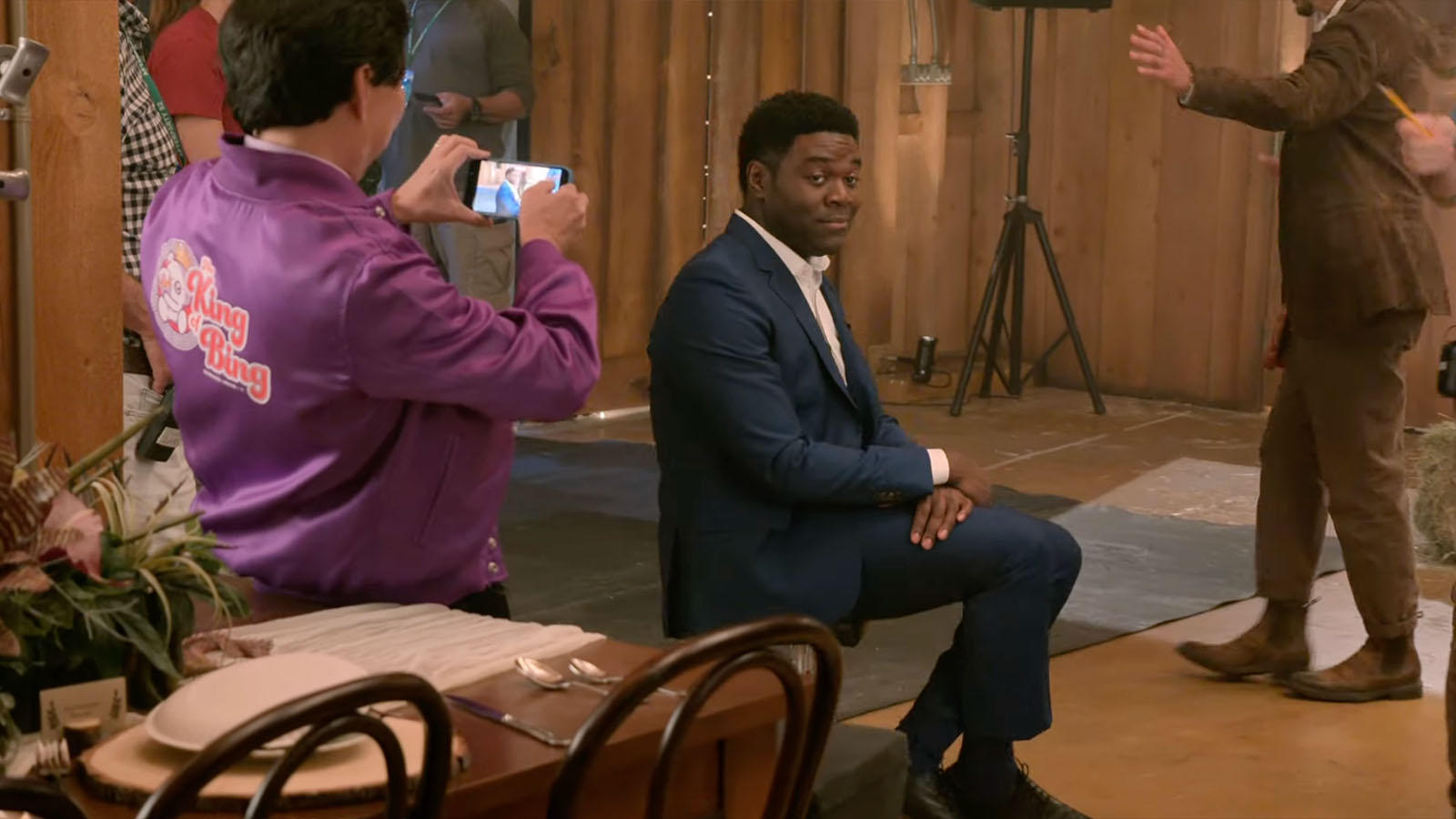
Tyler helped me out a lot with that because I’m the only industry person in LA that has an Android phone. So I had no idea.
Marissa Mueller: Shame.
Nick Olah: He was instrumental in that. Then, as far as graphics and comments, he just ran away with all that. That episode was probably the hardest one for me to do because I don’t have TikTok. I have never watched many TikTok videos.
We spent a full day in the director’s cut trying to TikTok-ify a lot of different things.
Eric Appel, the director, was a huge help in that process. He uses TikTok. We spent a full day in the director’s cut trying to TikTok-ify a lot of different things, which was great.
I love that episode so much because it really allowed me to be as creative as I could be as far as editing goes. We had to come up with stuff. The stuff in the TikToks isn’t scripted. The scene footage is scripted, but all the extra layers to it, the comments and stuff, that was just us coming up with it in post.
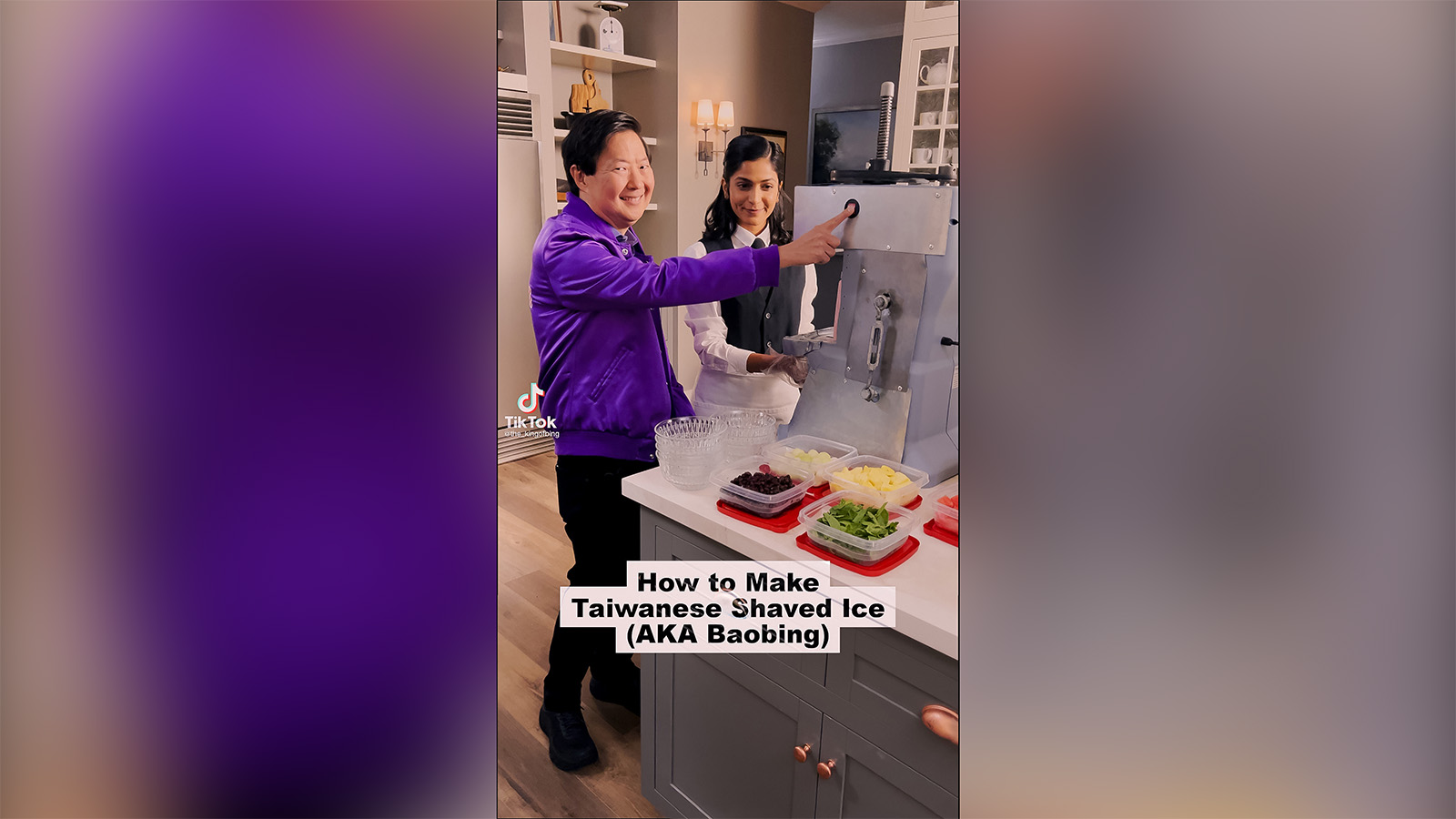
There was one scene where there’s a whole TikTok montage. We use a song from season one in it. That came very late in the process. I think Chris showed the cut to someone and they had a note, “You should turn that scene into a TikTok video.” Originally it was just clips back to back.
So I spent a day working on that. It was a lot of fun. It was a huge learning experience.
MF: Well, let me say: solidarity, my Android brother.
Nick Olah: Oh, nice. It’s the best phone. I probably can’t say that.
Ivan Victor: Well, if you don’t want to be on season three, you can.
Marissa Mueller: This is an Apple show, Nick!
Nick Olah: I’ll take an iPhone if Apple wants to give me an iPhone.
Ivan Victor: Or wait till Android has their own streaming service. You could do a show on Android.
Nick Olah: I think they did. It was called YouTube Red and I don’t know if it exists anymore.
MF: Tune in next week to find out where Nick will be working next.
Nick Olah: That episode was a big challenge, though. It came in extremely long and we had to get the cuts down. It was a challenge coming up with ways to edit it down to time. You just have this long clip, so what do you do?
MF: The next episode, “Isabel” was Marissa’s. There is a scene in the bar with Isabel (played by Elizabeth Perkins) in the foreground. It has that look that they call the split diopter effect. Both the foreground and the background are in focus. Did they actually shoot that with that classic technique or was it chroma key?
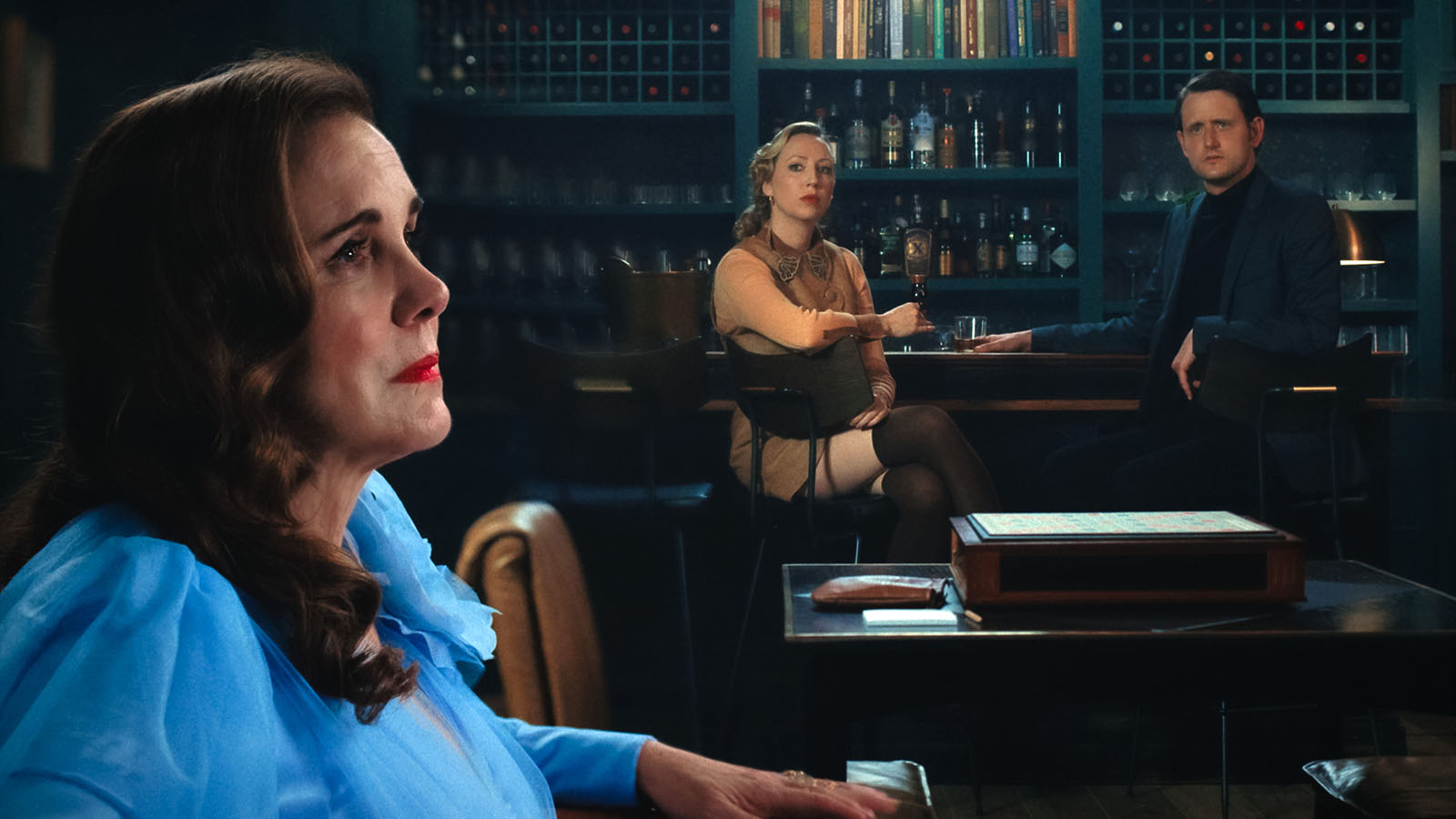
Marissa Mueller: They did. They shot that with that lens to get that look. You can see it on Isabel’s hand. The lens gives her a little bit of a ghosting look.
Obviously, they did a lot with color to really bring the whole episode to life. When I got the dailies, it already looked very Hitchcock because of the way that they shot it. It was really beautiful.
MF: I love that they put so much attention into the production aspect of it. That’s very cool.
Ivan, episode 210. Now, this is challenging because you had the finale. The people haven’t seen the show. I don’t want to give away what happened. But let’s talk about the genres that you had to work with. You start off in a campy horror film style. Then you get to have some fun with the classic 80s soap opera look.
Ivan Victor: It started as campy horror, but the inspiration for the fight with Colonel the dog was There’s Something About Mary.
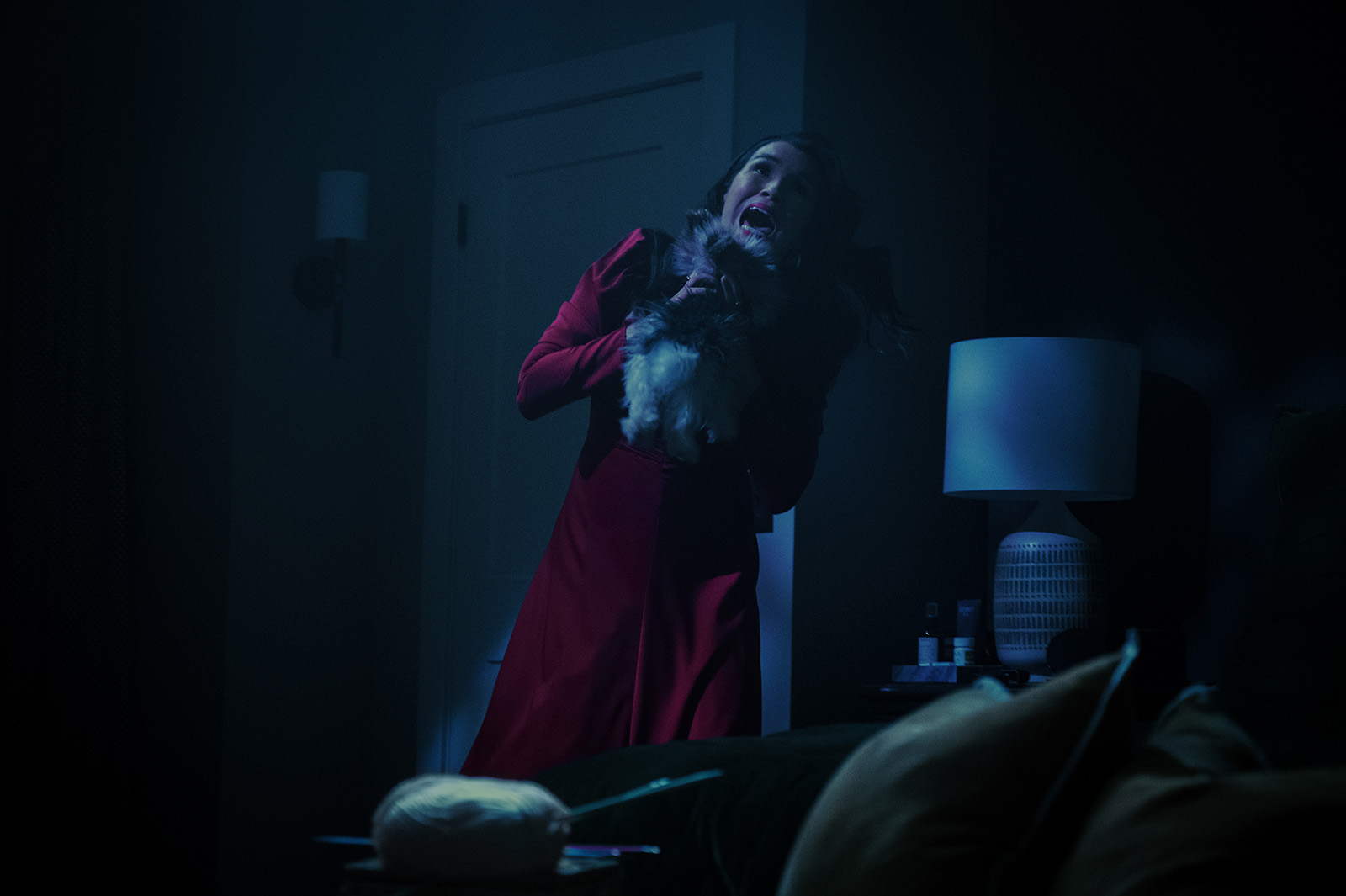
Nick Olah: Okay, yeah, I totally see that.
Ivan Victor: There’s a moment where the dog leaps at Zoe. Tamra Davis had designed it this way because there’s a shot where she throws the dog away from her throat. She said, “Run it in reverse.” That gave it a funny look as the dog leapt up at her throat.
Marissa Mueller: Very fun.
Ivan Victor: The soap opera was using all of those very cheesy camera zooms and the cheesy looks everybody had. The actors had a lot of fun with that. I think the music really helped as well, and the very poor sound effects.
Nick Olah: The way you cut that was great. I watched it last night and it was just so fun.
Ivan Victor: Thank you.
Marissa Mueller: Your original version had more of the looks, right? Did that get cut down?
In the script it said ‘There are too many looks.’
Ivan Victor: Yeah, I went very long with the looks, because in the script it said “There are too many looks.” It ended up coming down. But something that speaks to us as a post team that I really appreciated was that the finale has a lot of flashbacks to the other episodes.
We were really conscientious of making sure that the bits I put in as flashbacks were the current final scenes. Things were changing and the assistant editors did a stellar job of making sure that everything absolutely lined up with what was in the final cuts of all the other episodes.
I did want to bring up one other aspect of the show. Sorry to take your job, Matt.
MF: Please. Somebody should!
Ivan Victor: It’s the complexity and the love-hate relationship that I had with the “previously on”s.
Nick Olah: I’m very sorry about that.
Marissa Mueller: Those are very complicated.
MF: You couldn’t hand those off to an assistant?
Nick Olah: The thing with these “previously on”s is that there’s so much story in them. It’s not like any “previously on” in any other shows.
I think it was later on when we realized, “We’re going to need ‘previously on’s.” I cut one for episode two in season one. I did it in the generic style of a “previously on”. It was just sound bites, different pictures cut to sounds, whatever music. Then Phil Lord had a note, “Let’s try to do something a lot bigger.” He referenced the main title sequence of The Thomas Crown Affair.
I followed that note and created a unique “previously on” for every episode. This season, I was not going to do every “previously on” again because they take a long time.
They take two or three days to do sixteen seconds.
Ivan Victor: They take two or three days to do sixteen seconds.
Nick Olah: They really do. It’s crazy. It’s sixteen seconds and it takes a full day. You have to be very conscious of what you’re putting in. But it’s also fun because there’s all these little boxes. You can put in red herrings or you can put in an actual clue. They’re fun but they were definitely not the most fun to do.
Marissa Mueller: They’re fun to watch after.
MF: Well, Ivan, having to do the first episode and the finale, do those episodes take on a different kind of challenge? You’ve got to set up the whole show and then you’ve also got to wrap up the whole series.
Ivan Victor: I think the finale was more of a challenge because it was a case of catching all the balls that had been in the air. The first episode sets things up, but it does it in a similar way to the other episodes because it is that Rashomon perspective.
It didn’t feel like a traditional season opener where you’re being very careful about what you set up because, again, that was Aniq’s perspective. But the finale was a case of tracking every loose thread and there were a lot of them.
MF: Speaking of loose threads, I was struggling to come up with a way to end this interview. Something fun to talk about. Another one of my favorite gags is how the character Grace does “unnecessary knitting on the side”. What I’d like to know for each of you is, what mildly humorous thing do you do when you’re not editing?
Nick Olah: You know, it’s knitting adjacent. Crocheting. I actually like to crochet little cat beds.
Marissa Mueller: Oh my God. That’s amazing.
I actually like to crochet little cat beds.
Nick Olah: Anyone that knows me knows how much I love cats. I would say that’s my stress reliever from work. I haven’t done it in a while, but if there is ever downtime, I would bring in my yarn and my crochet hook and just go to town making cat beds for people.
MF: I can’t believe that question went somewhere.
Nick Olah: Also, a lot of football.
MF: Crocheting cat beds and football. The two just go together. Top that, Marissa.
Marissa Mueller: I can’t. At all. Dang it. I should have gone before Nick. Maybe you can switch it around so you can end with that.
I was going to say I try to garden. I’m not very good at it. I’m always battling various pests. I had mint that was growing beautifully and then it just got decimated by something. I have a tomato plant. Something ate all of the tomatoes. I have various nemeses outside eating everything I’m trying to grow.
Nick Olah: You know, there’s a beautiful plant I think you should plant. It’s called Devil’s Trumpet. I think it would look great in your garden.
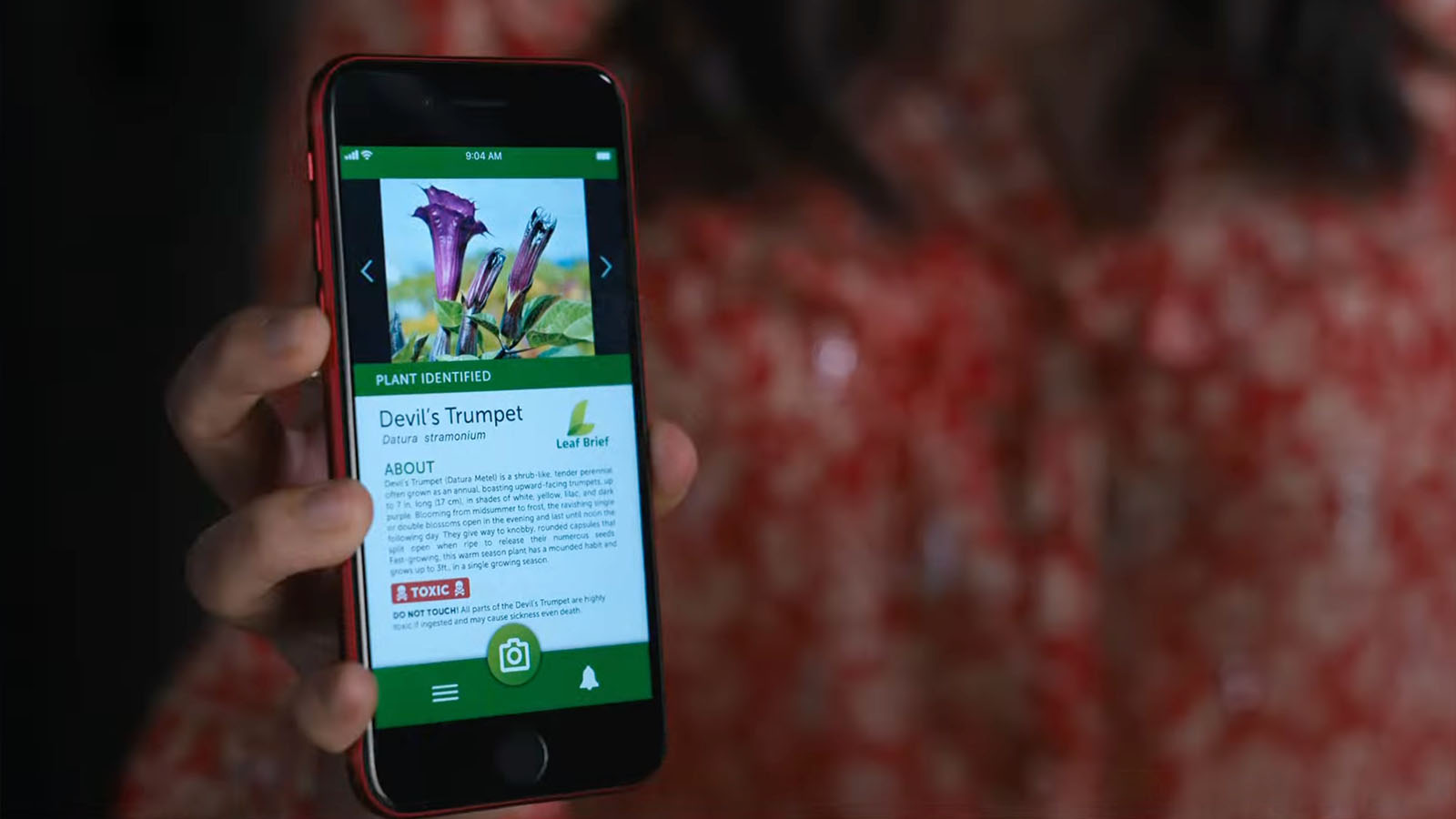
MF: And Ivan?
Ivan Victor: I listen to The Rough Cut podcast.
MF: I’m honored. I’m not sure how I feel about the mildly humorous part, but I’m honored.

